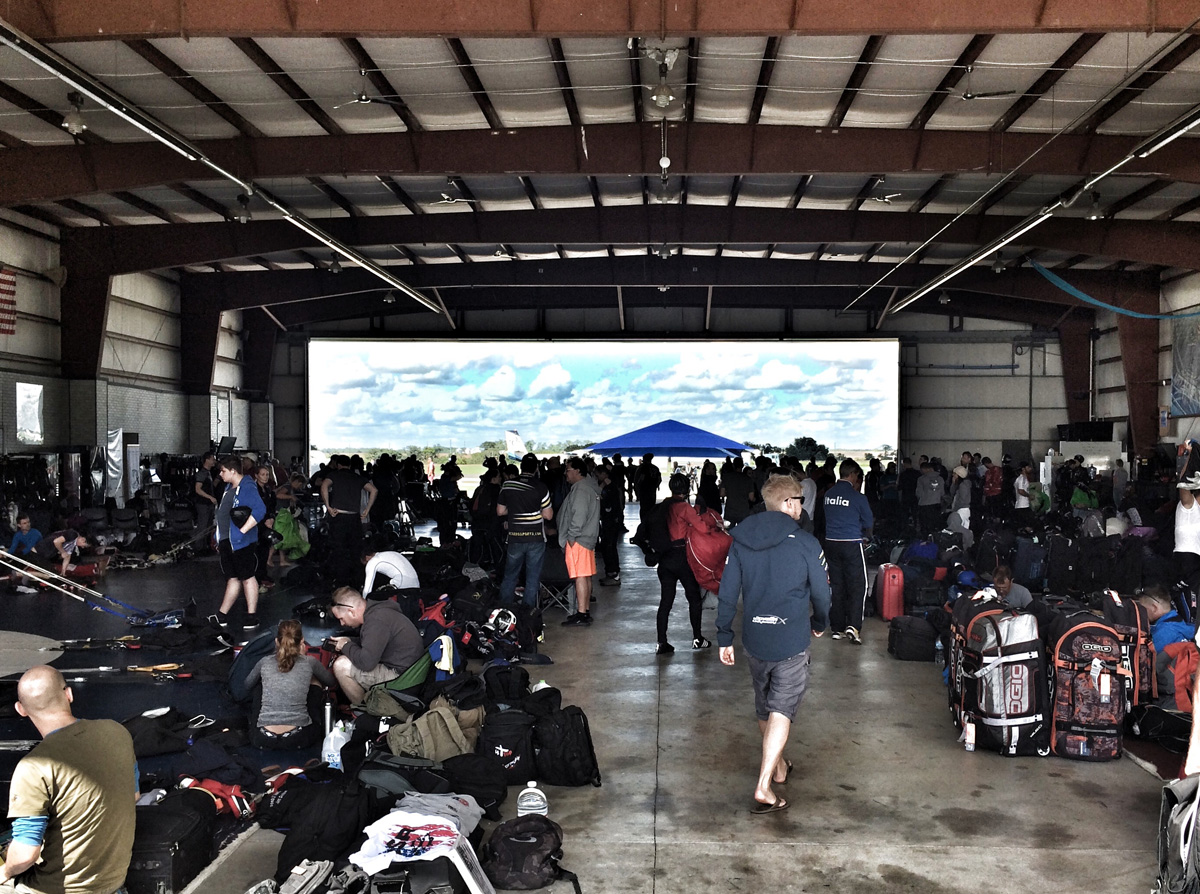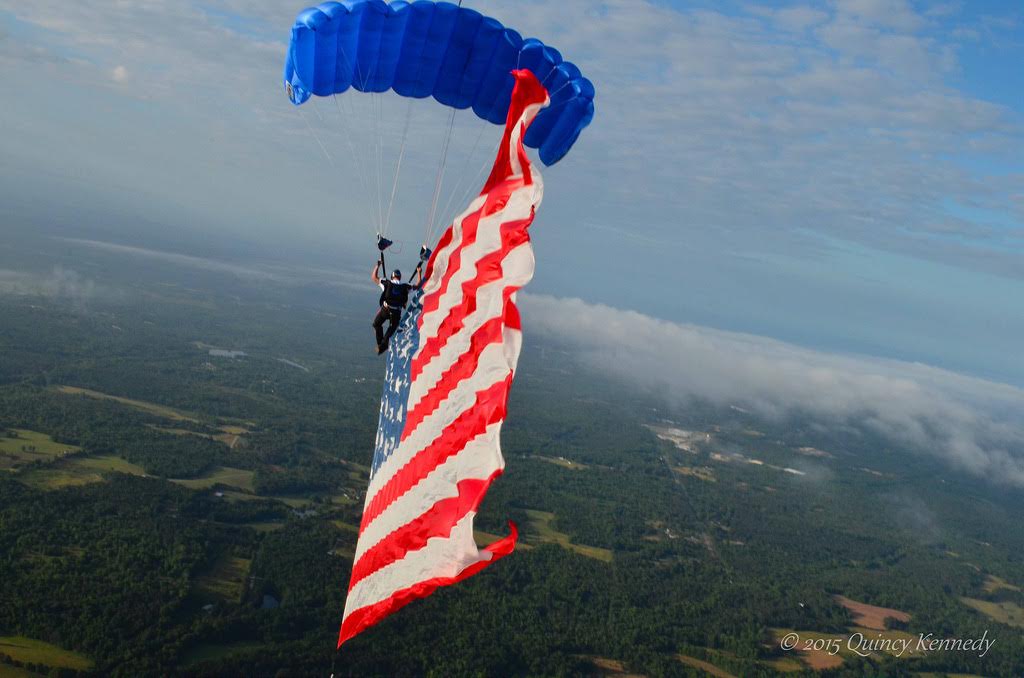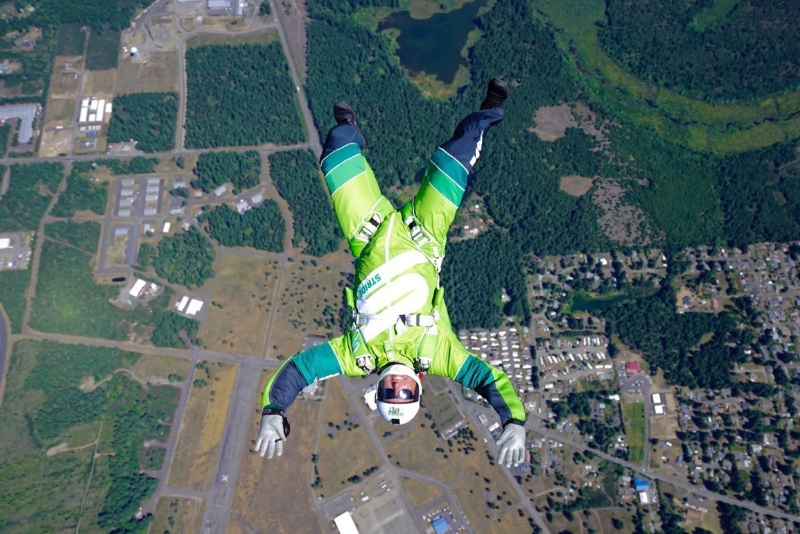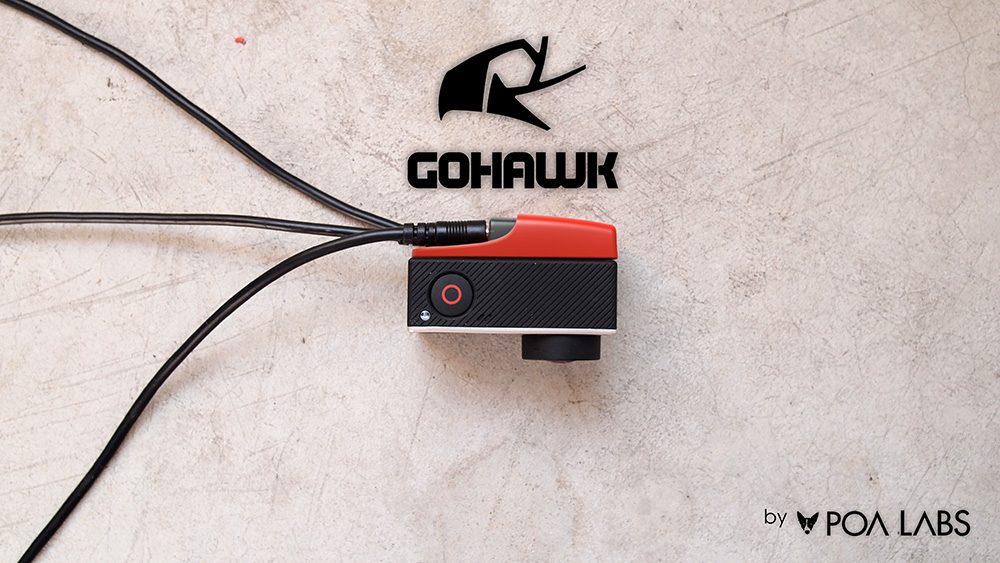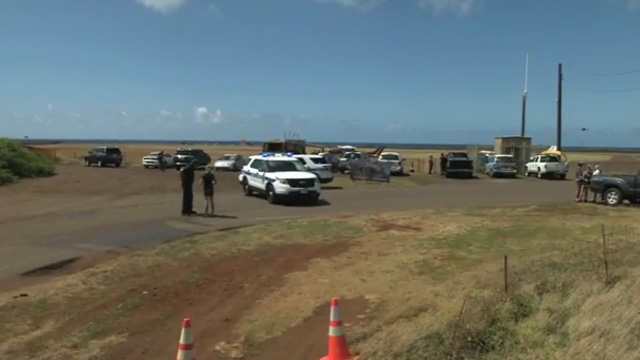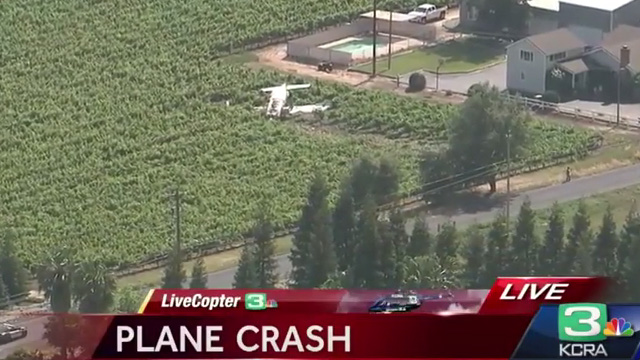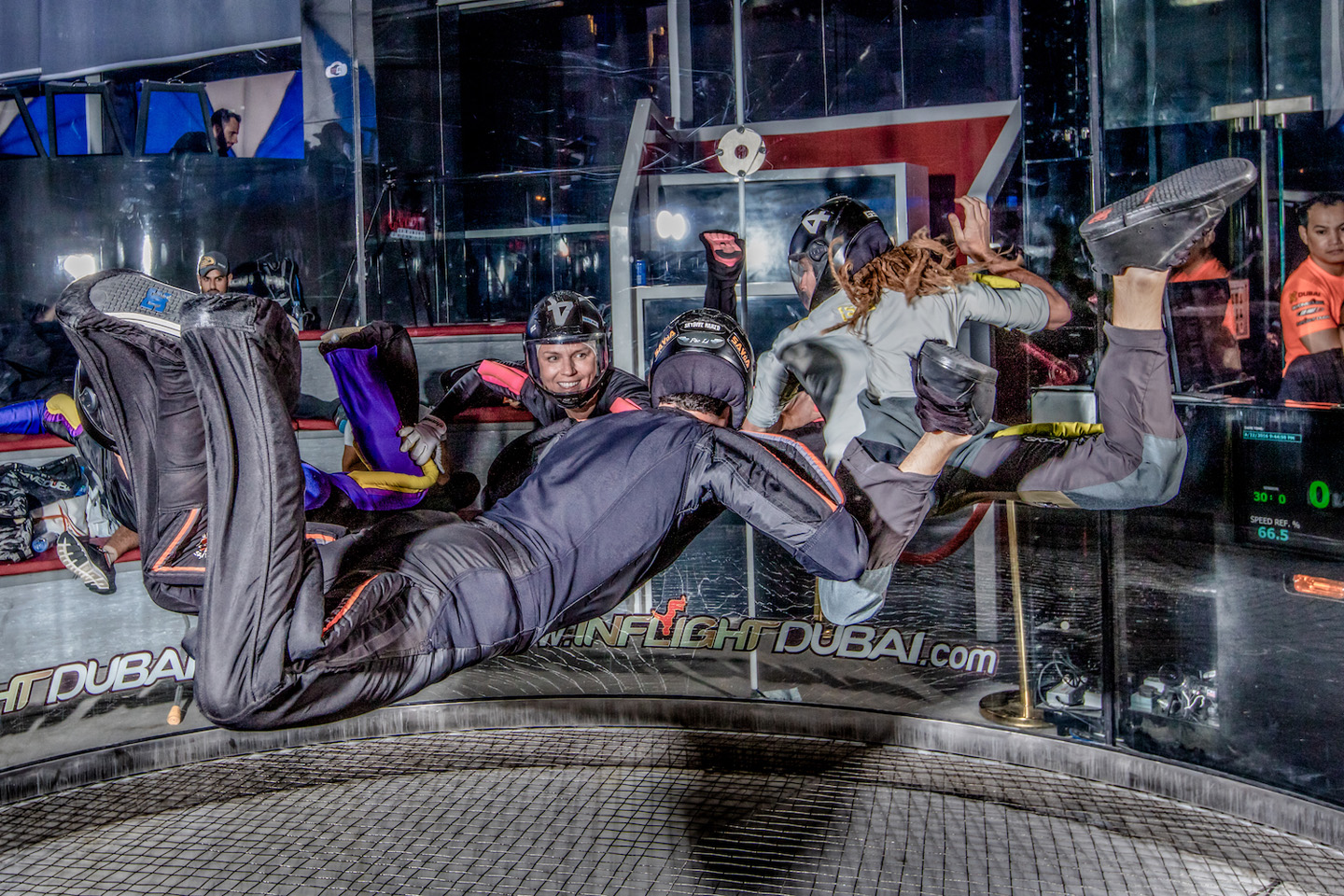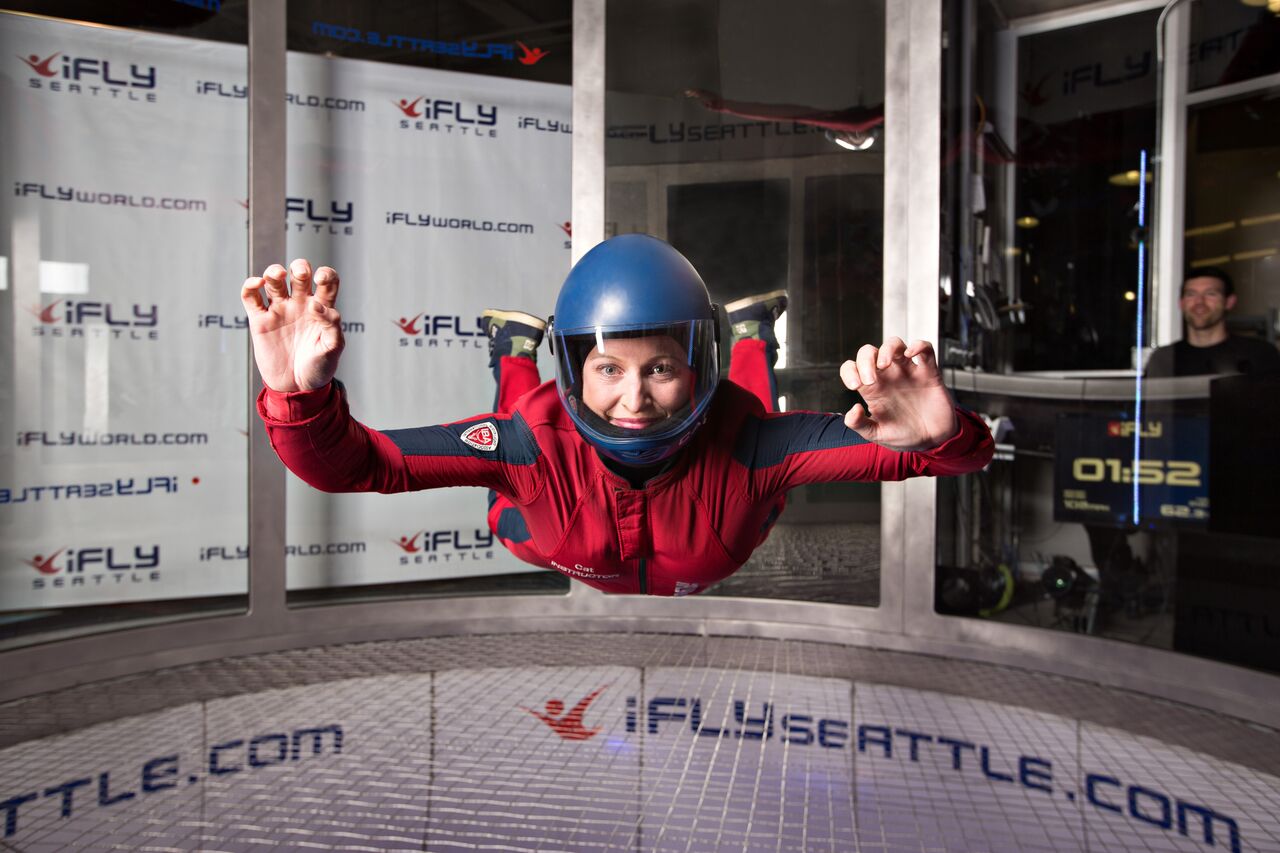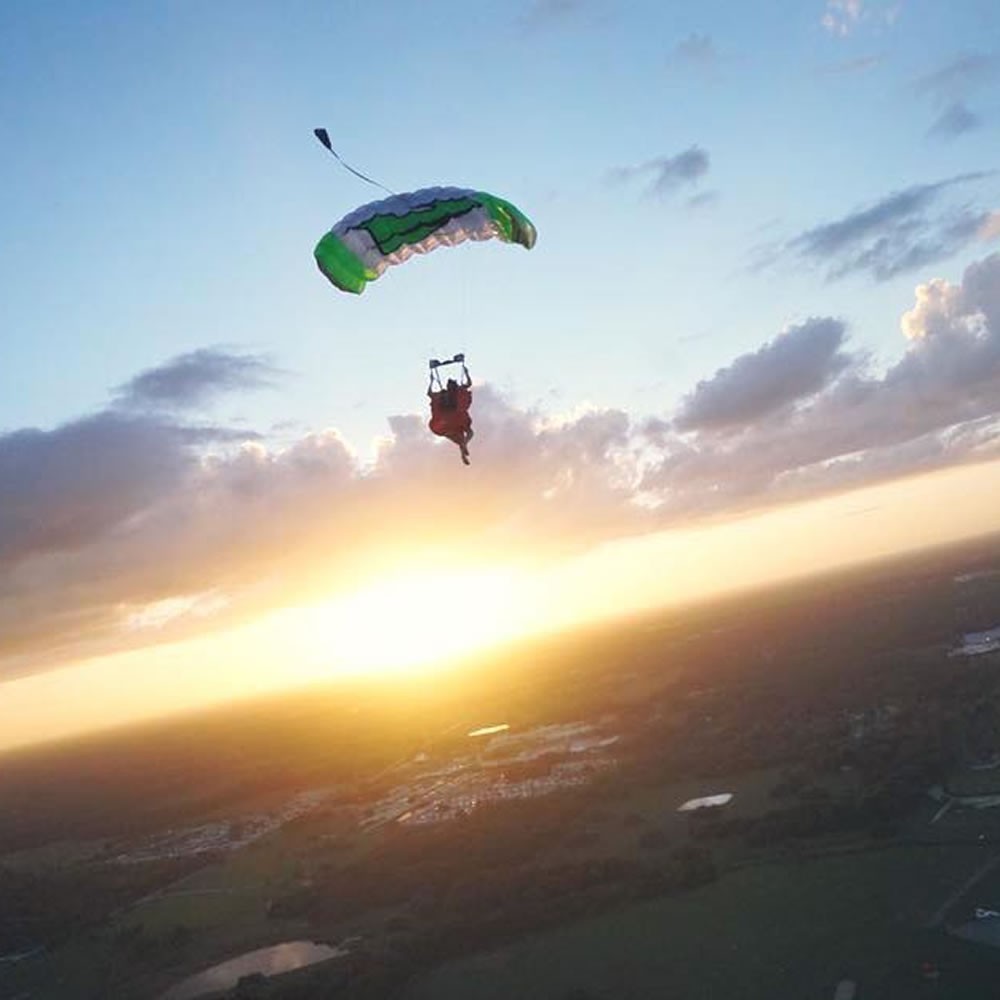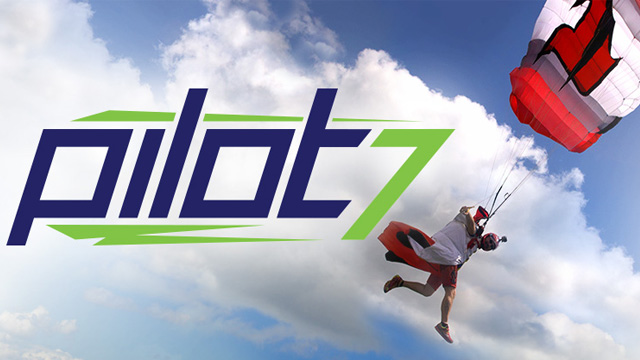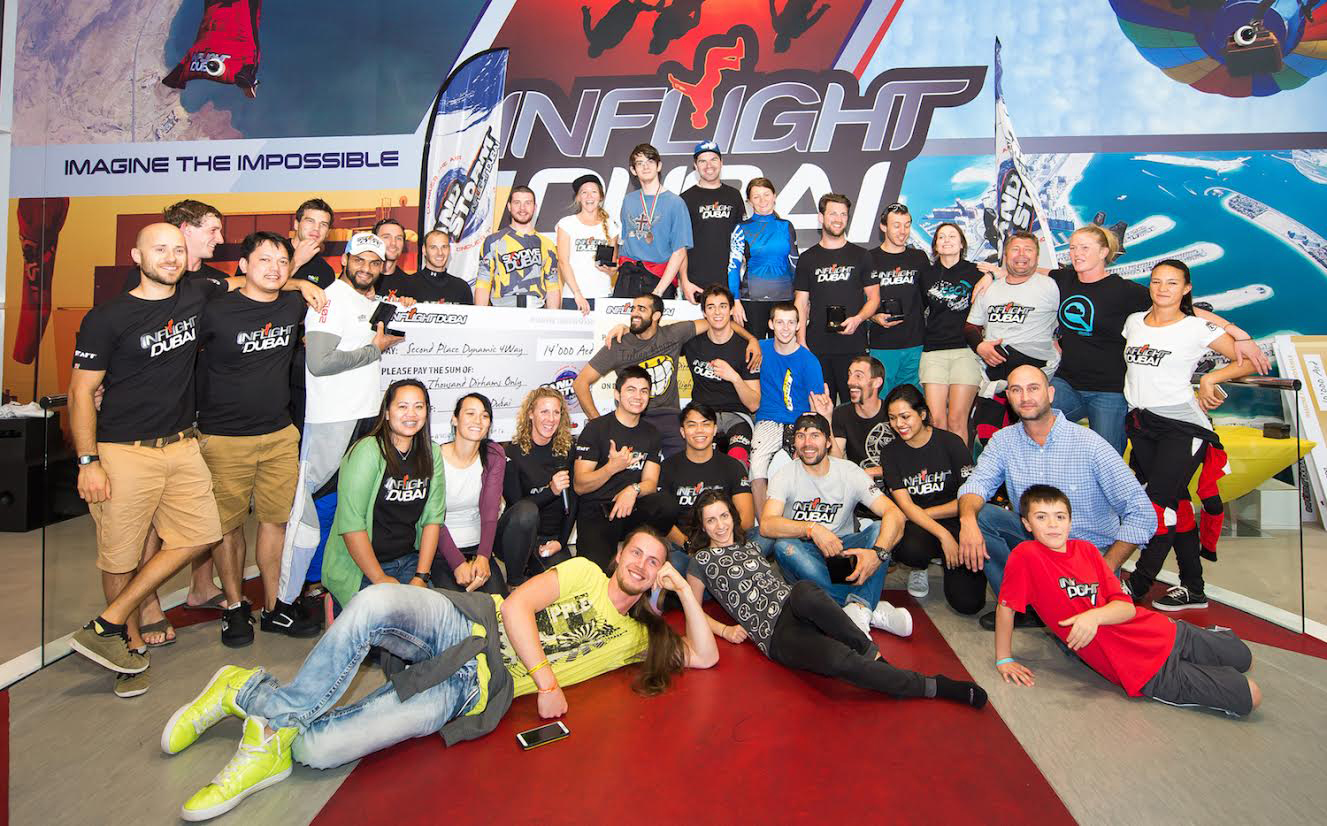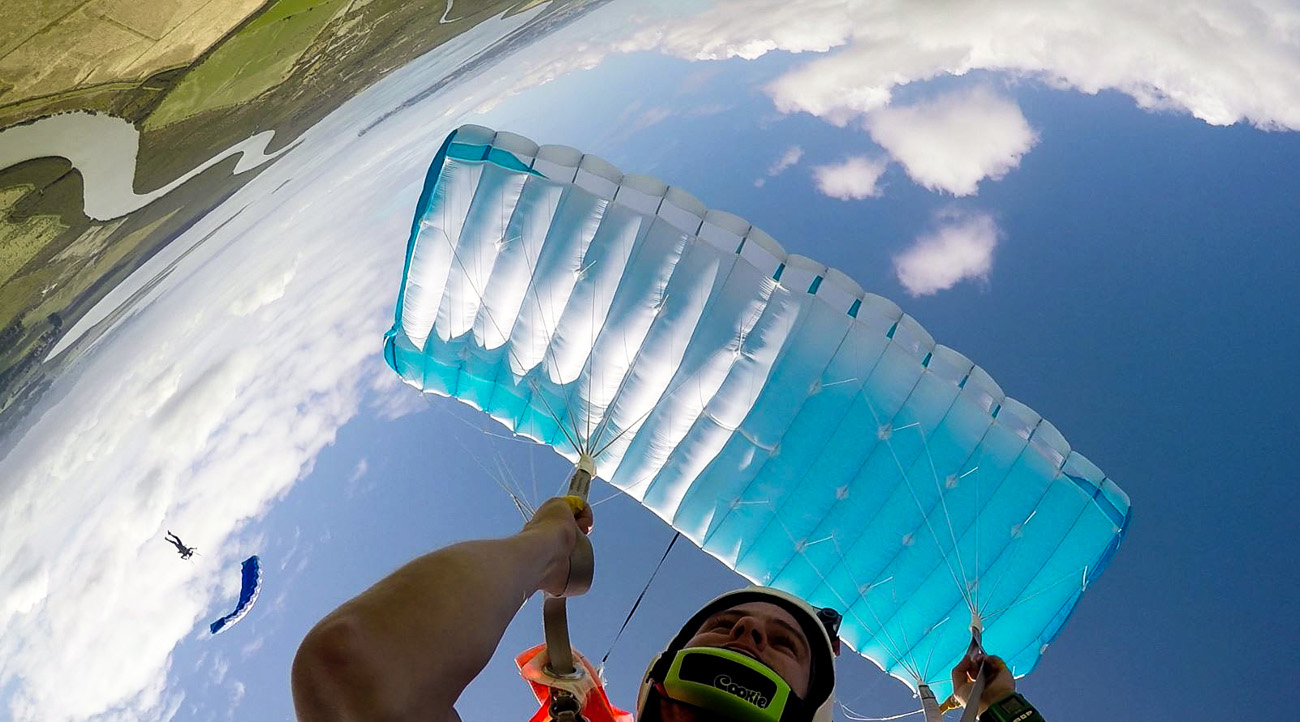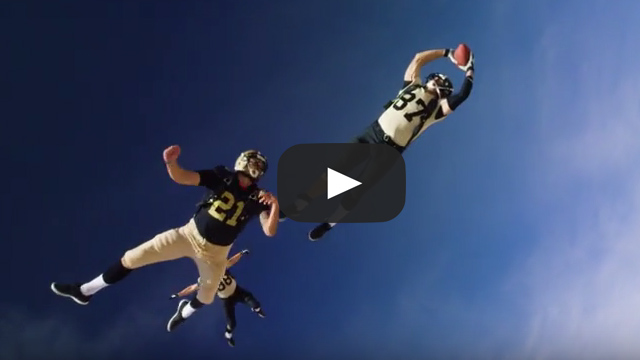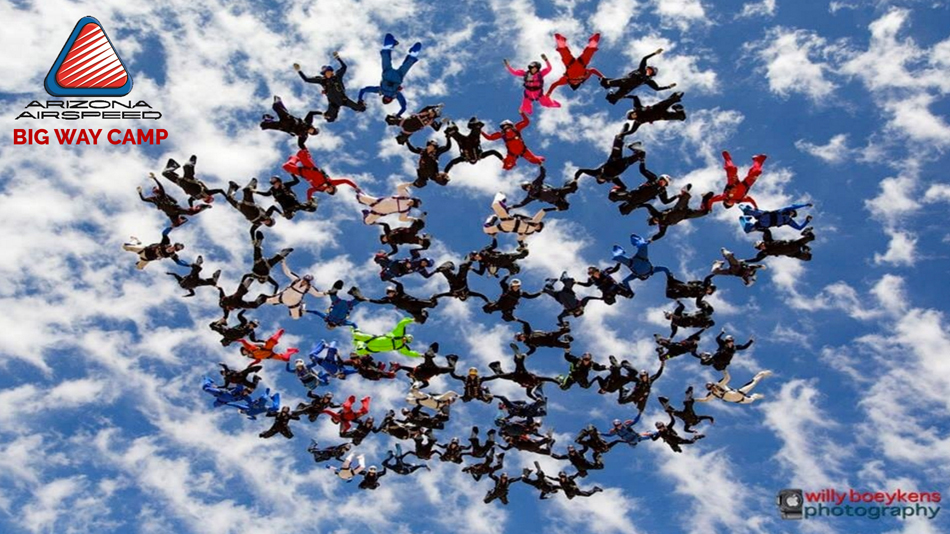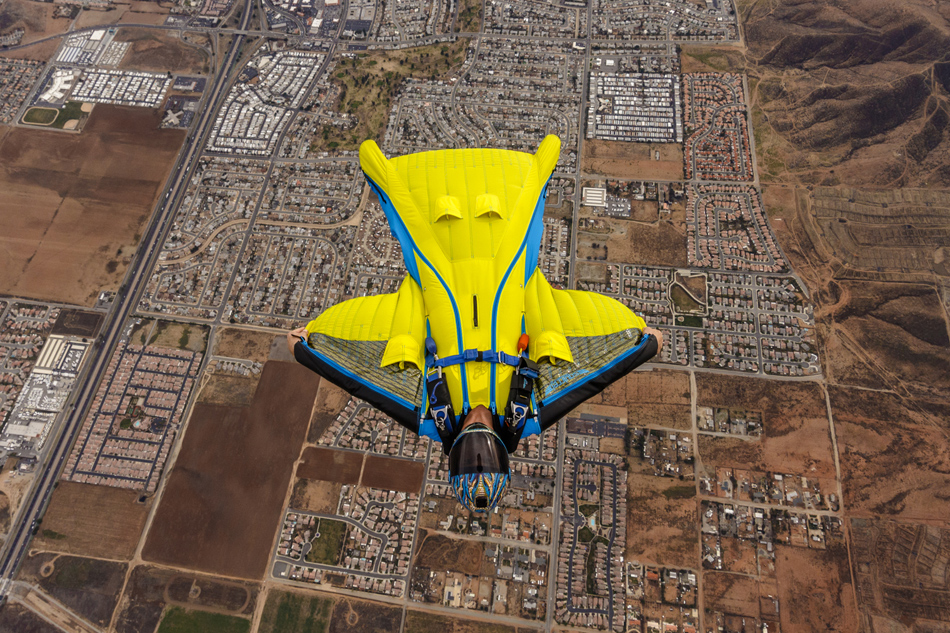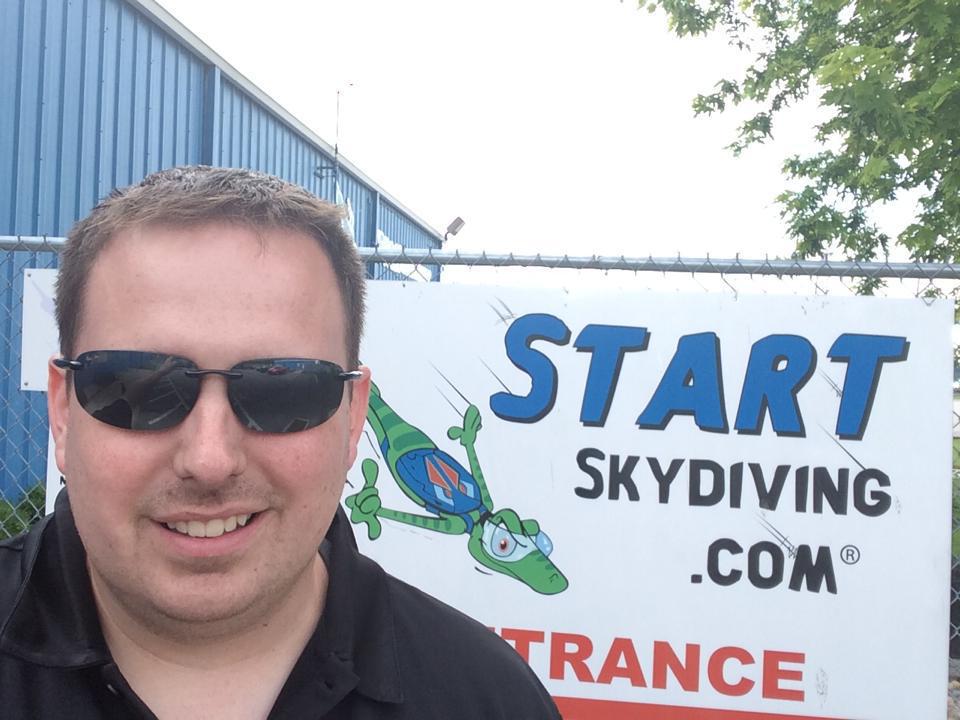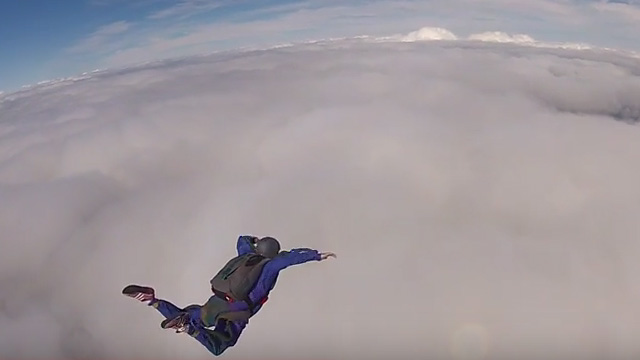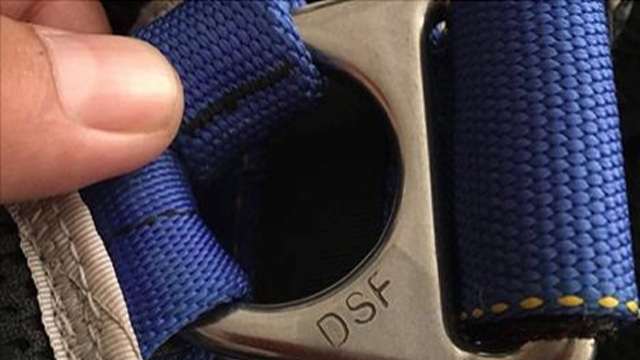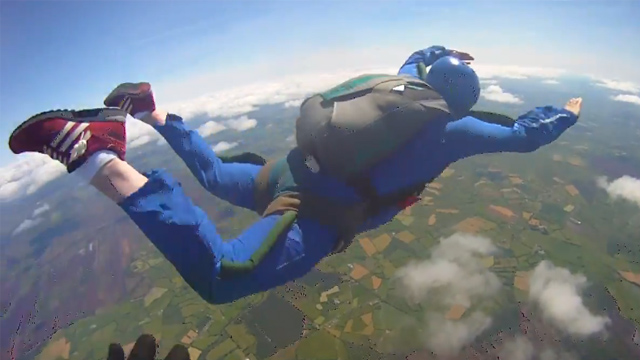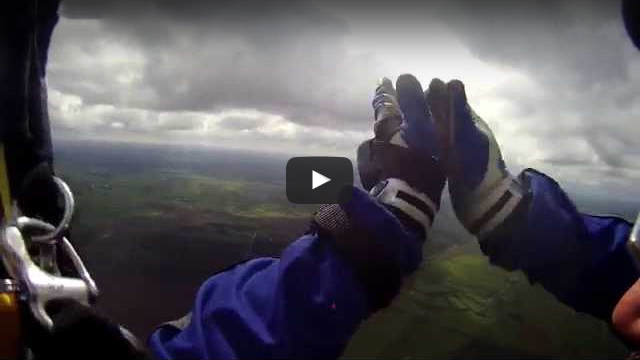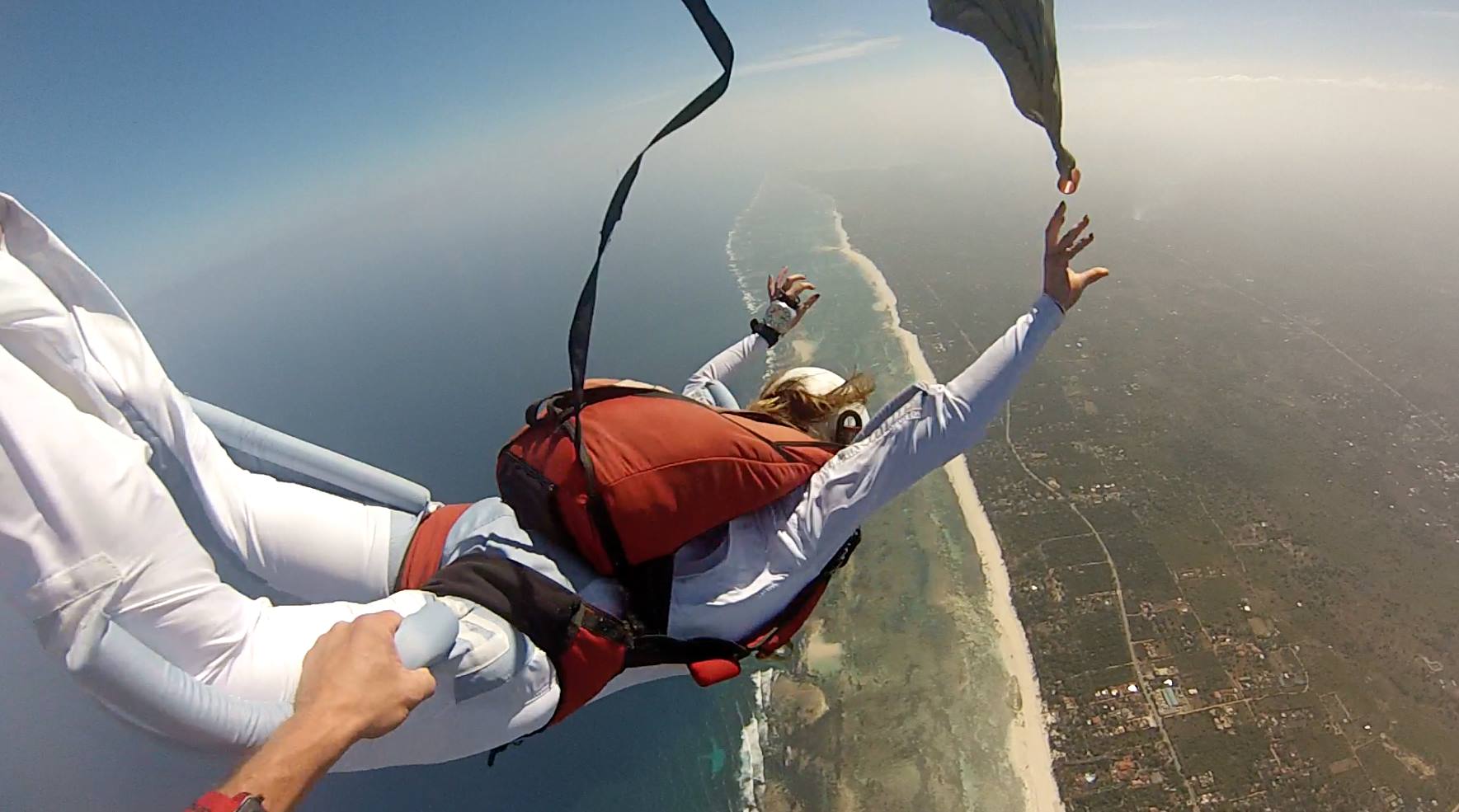-
Content
-14 -
Joined
-
Last visited
-
Days Won
1 -
Feedback
0%
Content Type
Profiles
Forums
Calendar
Dropzones
Gear
Articles
Fatalities
Stolen
Indoor
Help
Downloads
Gallery
Blogs
Store
Videos
Classifieds
Everything posted by admin
-
Henrik Raimer by Daniel Hagström There is so much going on across the Mondial proceedings that keeping abreast of everything that is happening is probably impossible. As a competitor you are acutely aware of how well you are doing, your personal battles and what is going on directly above and below in your table. You are also probably loosely aware of what is playing out throughout the rest of your category but likely not the specifics. You might have a general picture of how the other members of your nation are doing, discussed in the downtime in your delegation tent. By the time you are reaching across the disciplines to those with which you have few connections the myriad complexities, technical acumen and gatherings of points can quickly retreat into mystery. Early call times and some long waits for the right conditions give people a chance to mooch around and learn a bit more about the strange animals on display. An important thing that one can and should take away from this event is that no matter how askance you look at the disciplines somewhat removed from what you do personally, and no matter how much more exciting and important you think your jam is - everyone here is under the same pressure and dealing in equal measures of precision to get the job done. Solaris Freestyle by Nicolas Campistron At this mid-point through the scheduled days the logistics and weather considerations mean that some disciplines are nearly complete, while some still have the lion’s share to go. The Accuracy area has proven a bit of a draw throughout some long hours when prohibitively low cloud puts paid to any freefall activities - there are something like two hundred representatives doing ten rounds each so they descend carefully from the sky in a seemingly endless precession as human after human plops down onto the pad with a projected sharpened heel presenting a score, most often just a mere couple or few centimetres from the dead centre - which when hit is celebrated with a ripple of applause and a happy squeak from the machinery. Formation UpdatesFormation Skydiving is serious business - with a level of skill and technical mastery that takes years to perfect as you evolve through the platforms. Belgium’s Hyabusa have been running away with the open category while a tight battle is playing out in the women’s category between the U.S. Golden Knights and the French ladies with at times just a single point a separating them. Talk of the town here is how much the Qatar team have improved and now throw down proudly in the middle of their peers despite only having become licensed skydivers in 2012. French DominationThe French delegation get good support from their government throughout skydiving and as such their depth of skill is on display across the whole championships. Canopy Relative Work has Frenchies in strong medal positions across the three categories but at this point the exciting part is that both the French 4-way Rotation team and the Qatar 4-way Sequential team have broken world records early on then both proceeded to repeat the feat through subsequent rounds - Qatar doing so a half-dozen times. What's happening in freeflyOn the Freefly side of things, local team SDC Core have cleaned up in the business of turning points in VFS - yet despite being far enough out in front for it not to matter were forced to express some concern over a series of busts throughout one round for the same thing over and over which was explained away as them ‘doing it too fast’ even when reviewed on 70% speed. In the Artistic categories there is always the thorny issue of exactly what the judges like and don’t like, and the discrepancies between that and the points awarded and the opinions of the flyers taking part. This world meet is turning out to be the same story over again as the consensus of opinion from many of the teams is at odds somewhat with the positions on the scoreboard. However - few would argue that the Russians have been leading the way in Freefly for a few years now with amazing creativity and precision. The truest sign of being on top of the pile in freefly is that a lot of other performances start to look a bit like yours - and the Tunnel Rats influence can be traced down through the scoreboard. Freestyle is another category largely ruled over by the French, with their two teams battling it out for gold and silver by a clear margin. Freestyle is evolving and with a strong showing this year, interest from many other countries and a new generation of born and raised flyers on the way things look to be very exciting from here on. German Accuracy by Matthias Walde Team dynamics are interesting and complex - there is always a fair amount of conflict and cat-herding even amongst smaller teams, so it is no surprise that the very best 8-way FS teams are military concerns with the discipline and organisation to make it work. On the back of previous victories the Golden Knights are way out in front and show no signs of slipping. For me, the 8-way competition is the most interesting outside of my own as you can kind of make it out from the ground while laying back on an inflatable crocodile in the SDC pond. Big numbers in the speed skydiving categoryThe biggest surprise of the event so far has come in the Speed category - Sweden’s Henrik Raimer not only broke 500km/h for the first time in an official competition but recorded a new world record with a difficult to comprehend 601km/h. For context - the speediest of the other forms of competitive skydiving operate at around half of that. This is like turning up at the Olympics and running the hundred meters a couple of seconds faster than everyone else. Zoom!
-
Photo by Joel StricklandThere is much to love about spending time in America. For every little chuckle outsiders have about the way they do things here there is a cultural counterpoint that raises the place above its oddities. For every ludicrous psychedelic foodstuff lining the shelves of Walmart there is a dining experience that you will talk about forever, and for each curious use of language or baffling advertisement there is an example of doing things with such brio and flair it will makes you wish wherever it is you are from was a little more like it is over here. It has been a long while since the World Championships was held in the United States. Eloy presented the World Cup in 2005 but not since 1993 has skydiving biggest shown been to town. When discovering a place like Skydive Chicago it seems curious that it has been so long. Rook Nelson’s SDC is a great example of American bigness in the way the space and resources available here are presented. Manicured grass spills out and rolls off in every direction, looking for all the world like it is someone’s job to perpetually ride a mower in the manner of Sisyphus pushing that rock up that mountain. Uniform aircraft proceed in a unbroken cycle around a bespoke creation in a land-load-takeoff cycle eating up the ever increasing demand for lift capacity as one nation after another arrives to shake off the jet lag and get used to the place. By Friday the floorspace in the huge hanger is at a premium as there are more than 800 competitors from 37 nations scheduled to arrive from all over the world in time for the opening ceremony on Sunday afternoon. We are a well connected bunch so there is lots of catching up to do - perhaps just days have past between friends and rivals - or there are those have not seen since the last world meet in the Czech Republic two years ago. Teams weigh each other up. Progress is mostly hidden in the sky so much of the judgement is expressed about who has the nicest delegation gear to wear about while on the ground. This is parachuting’s biggest affair so everyone acts like it - style points, swagger, matching colours, matching luggage. The colourful menagerie of the length and breadth of skydiving is present - everything from nations where parachuting is largely a military concern representing proudly in canopy formation work and accuracy jumping, through the storied history and wide appeal of flat flying to the fresh faced kids turing up to throw down the new new way in the artistic categories. Photos by Joel Strickland Photo by Craig PoxonBy the time Sunday morning arrives the place is packed out. A day of heavy rain broke the oppressive humidity of earlier in the week but also flooded out the ancillary dropzone at Cushing Field (‘Swamp’) - so every category is here trying to get in their final practice efforts. Jumping only goes until noon to allow for the briefings and draws and to allow time for everyone to get to town for the opening ceremony. The usually perfectly adequate manifesting software was been set aside in favour of good old paper and pencils for which the result is a gigantic snake of humans at the window putting names in for thirty loads down the line. Pressure builds as we get closer to the start of the competition and everyone is deep in their own affairs - but getting this done should be recognised as no small achievement by the SDC staff as half a dozen aircraft do multiple passes and multiple heights - juggling every single category and jumping everyone safely. Some nations present huge delegations for the FAI Worlds using their full allotment of qualifiable teams. France, Great Britain and the USA itself each bring a small crowd to Ottawa Township High School brandishing flags to be introduced and applauded in turn. It is the smaller delegations though that raise the biggest cheers - the UAE has three representatives, Israel two, but the crowd rise to their feet for Cuba and India - nations both with a single member in the competition. Photo by Will PennyThe UK is not so far removed from the USA - we have been trading culture back and forth for a long time. Even so the images of a thousand movies echo in my imagination as we parade around the local high school football field in our delegation uniforms and it makes me wonder how representatives from more exotic nations find it here. The bleachers, the line of proud veterans with old bolt-action rifles, the national anthem perfectly timed with a formation flypast from the SDC aircraft and an enormous flag demo - Old Glory blazing in the strong afternoon sun. Americans are good at this stuff. The competition kicks off in the morning with an early start for some and a more relaxed call of noon for others. For now though we are thirsty and intent on embracing the invitation of hospitality from the mayor and the local community as we ooze out of the school into the town and the setting sun. Stay tuned for further updates out of Skydive Chicago by Joel.
-
-
Image by Quincy Kennedy, Courtesy Skydive CarolinaIt started with a simple fact: Soldiers are dying--after they come home--from self-inflicted injuries. The numbers are seriously disturbing. The veteran suicide rate, according to the Los Angeles Times, hovers a full 50 percent higher than the suicide rate of the general population. Some Veterans Administration studies suggest that up to 22 veterans end their lives every day. Those statistics underline the stark fact that it is overwhelming, for many servicepeople, to successfully make the transition from military to civilian life. The numbers indicate that the social safety net built to facilitate re-integration doesn’t seem to be up to the task. Unsupported veterans are suffering--achingly alone and mortally vulnerable. As harrowing as those statistics are, there’s another essential fact to face: one suicide is one suicide too many. Skydiver Jim Osterman, a Navy veteran himself, thinks that we--as representatives of our sport--can make a big difference in the lives of veterans. Osterman has been touched by suicide “more times then [he] want to think about.” After losing close military friends to suicide, he was moved to take action. Jim Osterman's late friend, Frank in his Marine uniform.“I knew when I got home from active duty,” he explains, “That what was missing in my life was the camaraderie that I had while I was in the service. The [veteran] suicide rate is as high as it is because these guys and gals are coming home and feeling completely alone, even if they actually aren’t in a physical sense. You don’t have that closeness you had while you were in the service. The dropzone community can fill that gap.” Osterman’s mission, project and passion is pretty simple: to make skydivers aware of the aching need for community in veterans’ lives, and to ask skydivers to bring as many people to the dropzone as they can. “It makes all the sense in the world,” Osterman explains. “Dropzones are very military-friendly. There tend to be lots of military people around, and dropzones generally already have military discounts and events for, say, Veterans Day and Memorial Day. But we need to let our veterans know that they are welcome to the dropzone everyday--not just the major vets’ holidays. Hopefully they will decide to skydive, but even if they choose not to jump, they need to know that they are welcome to come and just hang out.” “They need to experience the camaraderie at the heart of it,” Osterman enthuses. “It’s literally lifesaving, in some cases. Pretty much anybody is accepted into skydiving, and it doesn’t matter what your background is--your ethnicity--whatever. It just doesn’t matter. You walk in that door and you are greeted warmly. Veterans need that welcome more than I can say.” Jim joins up with a couple of buddies on a leg of his long, long trip.To raise awareness for this mission--and to commemorate the memories of his departed friends--Jim took off on a long-haul, dropzone-to-dropzone motorcycle trip on his Yamaha Raider. Sure, he made a few skydives on the trip, but the jumping always took a back seat to the mission. “I went to several drop zones that I knew I would not be able to jump at,” he says, “Just so I could speak with the owners in person rather than via email or over the phone.” Thirty-eight dropzones later, Osterman has spread his message all over the east coast of the US--and so far, he’s been overwhelmed at his fellow skydivers’ receptivity. “It really makes my point,” he says, “That even though they’d never met me before, I was completely welcomed and heard.” Interested, but unsure how to help? According to Jim, it’s very easy to get involved. “If you’re a skydiver, you can do this,” Osterman insists. “When you learn that someone is a veteran, approach them with an invitation. Let them know that they’re welcome to come out anytime and just hang out--sit on the park bench and watch some swooping, or join the weekend barbecue, or whatever else happens to be going on. Offer them a ride.” Lynn Luzynski Gromaski, Steve Luzynski and Karen Luzynski. “We’re looking to get these men and women out of whatever isolating situation they might be in and bring them to the dropzone so they can see the camaraderie that we as skydivers share,” he continues, “If we help even one man or woman see that people do care as a society, it will all be worth it.” When all was said and done, Osterman had exceeded his 4,000-mile goal by three thousand miles, had personally spread his message to hundreds of people and had earned the hearty support of several dropzones (including, exceptionally, Skydive Carolina). He’s already making plans to repeat the journey on the west coast next year. “‘Bring a Veteran to the Dropzone Day’ isn’t enough,” Osterman says. “I want the skydiving community to participate in the mission to bring veterans to the dropzone whenever, wherever they can. It’s not just another day. It’s another place for veterans. We can save lives.”
-
When the first astronaut landed on the moon, it was "one small step for man." Now, 47 years later, the next "giant leap for mankind" will be made by a skydiver hurtling 25,000 feet down to earth – without the help of a parachute or wing suit*. This first-of-its-kind event will be broadcast LIVE Saturday, July 30 (8:00-9:00 PM ET live/PT tape-delayed), on FOX, when world-class skydiver Luke Aikins jumps out of a plane with nothing but the clothes on his back and lands safely in the Southern California desert as his family and friends wait for him on the ground. The special will offer an exclusive behind-the-scenes look into Aikins' training and preparation, before culminating in the historic skydive. A third-generation skydiver, the 42-year-old husband and father has 18,000 jumps under his belt and helped train Felix Baumgartner for his historic Stratos jump. While he has performed a variety of skydiving stunts for tentpole action films, this will be his most challenging jump ever. By negotiating his fall and landing – using only air currents – Aikins will make skydiving history. "Whenever people attempt to push the limits of what's considered humanly possible, they're invariably described as crazy," said Aikins. "But to me, this jump is simply the next logical step in a lifetime of extreme challenges." The Stride Gum brand from Mondelēz International, Inc. is sponsoring the historic live stunt experience. "When we first heard what Luke Aikins was going to attempt, our jaws hit the floor," said Bonin Bough, chief media and e-commerce officer for Mondelēz International. "Bringing Luke's vision to life will redefine what's possible for skydiving and stunts moving forward. His focus, courage and intensity inspire us on so many levels." "Luke is actually a very down-to-earth guy," said Laura Henderson, global head of content & media monetization at Mondelēz International. "But his thinking is so bold and intense that we all felt this was the perfect event to team up with as we launch our new mad-intense Stride Gum campaign." Perhaps no one is better prepared to take on such a challenge than Aikins. In addition to his movie stunt work, Aikins serves as a safety and training advisor for the United States Parachute Association (USPA) as an instructor to the instructors. As the owner of Para Tactics, Aikins provides advanced skydiving training to elite military special forces. He is also a staff member at Kapowsin Air Sports in Washington and has contributed to the family legacy with three world records. "Everyone is calling this my 'coming-out jump' – which is ironic considering I've been skydiving since the age of 16," said Aikins. "But nothing even comes remotely close to this. I expect Heaven Sent to change me, skydiving and the future of live spectacles forever. It's going to be mad-intense and I'm thrilled to have Stride Gum on board as my teammate." STRIDE GUM PRESENTS HEAVEN SENT will be broadcast live as a one-hour special on Saturday, July 30 (8:00-9:00 PM ET live/PT tape-delayed) on FOX. Co-created by Chris Talley of Precision Food Works and Amusement Park Entertainment's Jimmy Smith, the event is being produced by Mondelēz International, Amusement Park Entertainment, and four-time Emmy winner Al Berman. In addition to the FOX broadcast, the event will be available via online streaming and pay-per-view around the globe. "It's not every day you get a chance to be part of something that's truly historic," remarked Talley. "We're very proud to support Luke in this amazing endeavor. Minds will be blown all over the world when Luke makes his giant leap." "HEAVEN SENT is the epitome of what we do at Amusement Park: create a larger brand story that is so compelling, it can't help but become part of the cultural landscape," said Smith. "I've never worked on a project so inspiring and mind-boggling all at the same time. It's one of those events where perhaps over a billion people will remember exactly where they were when Luke made history. Dope!" Aikins' leap represents the culmination of a 26-year career that will set a personal and world record for the highest jump without a parachute or wing suit. In fact, it's precedent-setting, since it's never been done before – period (at least, not intentionally). "Of course, this is a personal goal, but I'm certainly not doing it alone or in a vacuum. Beyond all the marketing hype, this is a once-in-a-lifetime feat that has taken the world's best skydiving experts, scientists and engineers many lifetimes to pull off," added Aikins.
-
POA Labs has announced the launch of the GoHawk, an expansion pack for the GoPro Hero4 that adds three new levels of functionality for POV Still and Video photographers. The GoHawk adds three new camera ports, allowing the user to connect: Remote shutter button. Save time by only shooting photos when you want to. Choose from hands-free mouth switches or a thumb triggered handlebar switch. Works with any 2.5mm remote shutter switch. Remote LED indicator lets you know that your camera is on and recording. The bendable indicator can be mounted in your helmet or wrapped around your handlebars. Auxiliary USB Power Input for extended shooting - plug into any battery pack and never run out of power again. The GoHawk enhances the process of shooting POV photos with your GoPro Hero4. Choose from a mouth-operated shutter button (best for chest or helmet mounted cameras) or a handlebar-mount push button (ideal for handlebar mounted cameras, cyclists, and motorcyclists). Simply plug your switch of choice into the GoHawk and start shooting! For still photographers, the GoHawk can be used in Continuous or Burst photo modes to capture the pictures you want, and ONLY the pictures you want. You’ll never have to spend hours sorting through the contents of a full memory card for that one magical shot. If you shoot video, you can easily start and stop recording using any external shutter switch. With the bendable LED indicator.you’ll never have to worry if your camera is on, taking a photo, or recording. A blue standby LED lets you know that your camera is on and flashes to let you know when your battery is low. A red record/shutter LED mimic’s the GoPro’s own shutter button lights no matter what mode you’re in. No special software is needed to operate the GoHawk. Simply plug it in and start shooting. The GoHawk is perfect for photographers and videographers who value the durability, price, and compact size of their GoPro’s, but need more control over how they capture the action. For more information, visit: the kickstarter page If you're interested in backing this project, you can support it on their kickstarter page, which is now live. About POA Labs POA Labs is a Portland-based product incubator focused on developing new and innovative products that enhance the lives of people who take their fun seriously. We want to enable our customers to do more - do it better, do it easier, and do it safer. Have more fun.
-
Just a week after the plane crash at Parachute Center near Lodi which resulted in a Cessna 208 upside down in a vineyard, another crash has occurred. This time however, with tragic results. A Cessna 182H jumpship from Skydive Kauai in Hanapepe (Hawaii) crashed early on Sunday morning shortly after take-off. All five individuals on board the aircraft died, with four being pronounced dead on the scene while another was taken to hospital, though was also later pronounced deceased. On board were two instructors, two tandem passengers and the pilot. At the time of publication most of the names of those involved had not been released to the public, with the exception of Enzo Amitrano, one of the two instructors on board. A witness to the incident claims that the aircraft had left the runway when shortly afterwards problems with the engine were experienced. The pilot is then said to have attempted to bring the plane back towards the runway when flames began to come out of the engine as it descended rapidly. There are some conflicts in media reports as to whether the fire began during the descent or only after impact, regardless the aircraft did catch alight and firefighters had extinguished the fire withnin an hour of the incident. According to the National Transportation Safety Board, the pilot involved was not familiar with the aircraft involved. Though it is not yet clear what role this may have played in the incident. Our thoughts go out to the loved ones of those involved. Discussions about this crash can be had in the incidents forum.
-
A Cessna 208 was left upside down in a field just off Jahant Road, near Lodi Airport on Thursday 12 May when the aircraft was forced to make an emergency landing. While it is unclear what caused the emergency landing and no official statement on the cause has been given -- the following was posted on the Dropzone.com forums. "One of my friends was on this load. Apparently they opened the door at 1000 feet and smelled fuel, everyone sat down and clipped in, then the engine failed and the plane landed upside down after clipping a nearby SUV. This is just what I heard, not confirmed" The owner of the dropzone had told the media that while they still weren't certain of the exact reasons behind the failure, he could confirm that the propeller had stopped spinning, forcing the landing. The plane was being operated by Parachute Center and there were eighteen individuals on board at the time of the crash. Thanks to the effect use of restraints in the plane, despite the fact that it was lying upside down, all eighteen passengers walked away from the incident without injuries. However, it was not only the passengers aboard the Cessna that found themselves subject to the situation. While making the emergency landing the plane just clipped the tail of an SUV with two individuals inside. Thankfully it was merely a small nick to the vehicle and both the driver and passenger of the vehicle walked away with nothing more than a bit of shock. Showing that nothing can keep a dedicated jumper out of the sky, several of the passengers aboard the crashed plane returned to the dropzone to continue jumping, just moments after the crash. Discussions on this incident are currently taking place in the Plane Crash - Lodi 12 May 2016 thread. Update: 16 may 2016 Footage has now been released from inside the aircraft which can be viewed below:
-
Competing for the first time as a team, the all-girl foursome of Shavon Simpson, Kim Myers, Kristen Johnson and Nada Almarr powered to the top in the 4-Way Formation Intermediate Category at the second 2016 SandStorm Scrambles event at Inflight Dubai. The foursome – the only all-girl group in the 16-team competition open to both Intermediate and Rookie skydivers – produced a stunning final jump to snatch the title after a closely-fought battle saw the four-round competition go to the wire. Combined together by the event judges in order to represent a spread of ability, the girls adopted the team name ‘The Mighty Morphing Flower Arrangers’ and certainly blossomed as a 4-Way Formation team scoring 87 points to win by seven from runners-up the ‘E-Lemon-ators’, featuring Gabor Molner, Iurri Railean, Alexander Staschenko and Janina Huschle (80 points). Also scoring 80 points but given third place due to an inferior top scoring round were Glen Lowerson, Clare Greenwood, Emma Merritt and Cornelia Mihai (‘Break Like The Wind’). “As we hadn’t flown together before and were the only all-girl team in the competition, it certainly went better than we expected,” said a delighted Shavon Simpson. “The great thing about competing with people you have never flown with before is you learn, you adapt and you have fun. “Obviously there is pressure on you as you’re not competing with your usual team-mates and you don’t want to let anyone down but it is a great format.” Staged in inflight Dubai’s 5.03m x 20.73m indoor tunnel, the two-category event saw competitors combined into teams by highly experienced judges and SkyDive Dubai instructors Eliana Rodriguez and Alena Chistova. Competition was fierce throughout as the teams performed a number of formations in the tunnel under the watchful eyes of both Rodriguez and Chistova. Going into the final round, the eventual winners were lying in third place but produced a near-flawless final performance to score 30 points – the best of the night – and take the title. “I don’t think any of us were breathing on that last jump,” added a delighted Simpson, who helped her team to the winners’ cheque of AED 16,000. “We knew we had to score well if we were going to win so we stayed completely focused on getting a big enough score. Fortunately, it paid off.” In the 4-Way Formation Rookie category, victory and the first prize of AED 12,000 went to the ‘Dutchy’s’ team of Ahmad Abdulla Hashim, Pablo Rua, Sioned Taylor and Nawaf Alawadhi on 57 points, seven ahead of the ‘Heroes and Zeros’ team of Abdulla Aldosari, Sean Hahessy, Andy Salisbury and Khaled Mahdy (50 points). Third place went to ‘Chitty Chitty Bust Bust’ comprising Khaled Abduljalil, Ana Fratila, Karim Madour and Margo Weber on 47 points. “A big thank you to everyone for making it an exciting competition,” said Meet Director Ian ‘Freddy’ Macdonald. “The Scrambles format is one of our most popular events and we look forward to staging even more indoor tunnel flying competitions in the near future.” SandStorm Scrambles Results 4-Way Formation Intermediate 1. Myers/Johnson/Almarr/Simpson 87.00 2. Molner/Railean/Staschenko/Huschle 80.00 3. Lowerson/Greenwood/Merritt/Mihai 80.00 SandStorm Scrambles Results 4-Way Formation Rookie 1. Hashim/Rua/Taylor/Alawadhi 57.00 2. Aldosari/Hahessy/Salisbury/Mahdy 50.00 3. Abduljalil/Fratila/Madour/Weber 47.00
-
Photo credit: Cornicello PhotographyiFLY Indoor Skydiving and the International Bodyflight Association (IBA) are proud to announce that Catriona (Cat) Adam has become the first woman ever to be certified as a Level Four Instructor/Trainer in the sport of indoor skydiving. Level Four Instructor/Trainer is the highest level attainable under the standards established by the International Bodyflight Association. During the 12 years iFLY and the IBA have been certifying instructors and trainers, more than 650 instructors have met IBA standards for Level One Instructors, and only about a dozen of those instructors were women. Of those Level One Instructors only about two dozen men have gone on to become Level Four Instructor/Trainers. The path to attaining Level Four Certification requires intense training, commitment, experience, the strength and ability to withstand rigorous physical demands of flying, coaching and teaching flyers from first-time flyers to world champions, and the determination to be the absolute best. Chris Dixon, Lead Instructor/Trainer at the IBA, said, “At every level, Cat made it clear she could meet or exceed the requirements for advancement; all she needed was the opportunity to excel.” iFLY’s current expansion plans have increased the need for qualified Level Four Instructor/Trainers. One of the responsibilities of Level Four Instructors is to teach the new instructors what is necessary to meet iFLY’s expansion plans. Photo credit: Cornicello Photography“iFLY is expanding, and we depend on Level Four Instructor/Trainers to teach and maintain the highest level of safety within the instructor group,” said Chris. “While many of us were hoping Cat would succeed, we also knew she and all other instructors would have to meet or exceed the safety standards expected of every other Level Four Instructor/Trainer, no exceptions. All those who know Cat are not surprised she reached her goal of becoming the best, and all of us are thrilled for her, but we also know and respect how hard she worked to master every challenge in the training and certification process. We know she will continue to be the best, share her experience and dedication to safety with others and hopefully inspire more women to join us as instructors! iFLY is better for having her on the Level Four Instructor/Trainer team.” “While I am proud of my accomplishment and appreciate the opportunities given to me to advance,” Cat said, “I must admit while watching my first class of instructors I trained working with their first class of first-time flyers, I was like a mama goose nervously watching her fledgling geese fly for the first time. I was also very proud of them and their clear focus on the safety of their new students!” Photo credit: Cornicello PhotographyCat will continue to train new instructors, help maintain and increase the safety of everyone flying in an iFLY tunnel and continue improving her personal flying skills. To Cat, the sky is not a limit; it represents limitless possibilities. Skydiving and tunnel accolades 2014 Gold : 2-way dynamic advanced IBA tunnel competition 2014 Silver : 4-way dynamic advanced IBA tunnel championships 2013 Participant : 63-way vertical world record (women’s) 2011 Participant : Freestyle Nationals (British) 2011 Participant : 80-way head down record (European) 2011 Organizer : Woman’s head down record (British) 2010 Participant : 22-way head down record (British) 2010 Participant : 41-way vertical world record (women’s) 2009 Gold : Freestyle Nationals (British) 2009 Gold : British National speed (female) About iFLY Indoor Skydiving: Austin-based iFLY Holdings, LLC is the world leader in design, manufacturing, sales and operations of wind tunnel systems for indoor skydiving. Under the brand names iFLY, SkyVenture, and Airkix, the Company has flown over 7,000,000 people in a dozen countries since launching the modern vertical wind tunnel industry in 1998. iFLY has 39 facilities operating, 15 currently in construction and another 8 planned to start construction before the end of 2015. iFLY supports and utilizes the safety and training rules set out by the International Body Fight Association (IBA) to ensure safety and progression of the sport of indoor skydiving.
-
When you have a famous name, there is an expectation to live up to it. This has certainly influenced our design of the Pilot7. The Pilot 9-cell canopy has built a solid reputation for great openings, flat glide and a powerful flare. The new Pilot7 needed to be pretty special to be worthy of the name Pilot. It is. The Pilot7 is probably the best wingsuit canopy made. It provides superbly consistent openings, which inspires confidence in everyone, from a beginning wingsuit flyer to a world champion (and several of both are happy Pilot7 flyers). In flight, you will find the Pilot7 an agile and fun canopy. It is predictable enough that it encourages you to wring it out and play. It has a flat glide and a powerful flare, likely more so than any 7-cell you’ve experienced. We make the canopy in standard ZP, in our honeycomb low pack volume ZPX, and in a new alchemy of materials we call UltraLPV. This builds the top skin and stabilizers from ZPX, and the ribs and bottom skin from FX-11 (the low pack volume material used in the SmartLPV). We use the ZLX lines to create an amazingly low pack volume canopy. While we know wingsuit flyers love a great opening 7-cell available with unprecedentedly low pack volume, we also expect that there will be a demand from a broader spectrum of the skydiving community. Students, younger jumpers, and older jumpers will all benefit from the forgiving openings, low pack volumes and great handling characteristics of the Pilot7.
-
Aerodyne recently announced the release of their new canopy, the Pilot7. This new main, which was initially developed with wingsuiters in mind, is a 7-cell variation of the popular Pilot canopy which Aerodyne have sold for over a decade. The original Pilot canopy is in fact the company's most successful product, with the 9-cell elliptical holding an average rating of 4.67/5 based off 69 votes in our gear section. Aerodyne say they found their design for the Pilot7 heavily influenced by the strengths of the initial Pilot, and wanted to ensure that the new canopy lived up to the expectations set by its older sibling. Something for EveryoneBoth beginner flyers and experienced wingsuit pilots have reportedly demoed the Pilot7 with great results and public feedback as to the performance of the canopy. The company claims the Pilot7 provides 'superbly consistent openings', while in flight offers the pilot something fun and agile, while still remaining stable and easy to fly. "It has a flat glide and a powerful flare, likely more so than any 7-cell you’ve experienced.", claim Aerodyne. It was clear that solid, reliable openings were a key factor for this canopy during development, and testimonials from those who have been demoing the Pilot7 seem to confirm that Aerodyne have really hit the nail on the head with regards to the reliability of openings. While the focus of the Pilot7 was wingsuiting, Aerodyne say they expect that the canopy may become popular in other demographics of jumpers. Due to forgiving openings, handling characteristics and low pack volumes of the canopy, it could serve as a great choice for all skydiving skill groups, however could prove especially useful for beginner skydivers. MaterialsThe standard version of the Pilot7 will come in ZP, while there are also the options for Aerodyne's honeycomb low pack volume ZPS and their new UltraLPV material. "This builds the top skin and stabilizers from ZPX, and the ribs and bottom skin from FX-11 (the low pack volume material used in the SmartLPV). We use the ZLX lines to create an amazingly low pack volume canopy." Available sizes: 117, 137, 147, 167, 187, 207, 227, 247 sq ft.
-
New Zealand’s Mason Holden and Flying Finn Toni Sulankivi blew away the best of the UAE’s indoor skydivers to win the Dynamic 2-Way category in the annual SandStorm Scrambles event at Inflight Dubai. Despite never having competed together – the duo only met for the first time on the night of the competition – Holden and Sulankivi combined superbly for a five round score of 411 points. It was enough to win the 13-team category by 8.8 points from Shayni Couch and Ivan Semenyaka in second place (419.8) with Omar Mohammad and Thomas Worboys coming home in third with a score of 421.1. Staged in inflight Dubai’s 5.03m x 20.73m indoor tunnel, the two-category event saw competitors combined into two and four-flyer teams by Inflight Dubai’s Team Skynamic in order to represent a spread of ability. And while many combinations, including Holden and Sulankivi’s ‘Little and Large’ team, had little or no experience together, the entrants agreed that the format provided some excellent competition. “I hadn’t even met Toni until the draw was made just before we took to the tunnel together,” said Holden, who hails from Wellington in New Zealand and is an instructor at Skydive Dubai. “But that’s what makes the Scrambles competition so much fun. You don’t know who you will be paired with, which makes the five flying routines very challenging.” For Sulankivi – who shared the AED8,000 first prize with Holden - it was the perfect end to a long day of skydiving, both indoor and outdoor. “I live in Abu Dhabi so I was up at 5am to come up to Dubai to go skydiving during the day, before competing in the tunnel in the evening,” said the Finnish flyer, who works in Government IT in the UAE capital. “It’s a very special event and the unpredictable nature and the camaraderie between the teams make it so good. You know most of the guys and girls by sight but to compete as a pair with someone you have never met before is a real challenge.” For Holden there was double success – the Kiwi also claimed second place in the 4-Way Dynamic competition after joining forces with fellow-flyers Mo Mudassir, Jamie Arnold and Emma Merritt in the ‘Bench Pressers’ team. Victory, and the AED16,000 winners’ cheque in the five-team 4-Way Dynamic category, went to the ‘Employee of the Month’ team of Dani Roman, Thomas Worboys, Brad Merritt and Mishka Lucaci on 423.8 points, 12.1 points ahead of ‘Bench Pressers (435.9). Third place went to the ‘Randy Ryanopolis’ team of Ryan Dudderidge, Pablo Rua, Omar Mohammed and Ivan Semenyaka on 444.5 points. Both competitions featured a non-scoring warm-up round, four unique dynamic speed rounds and a mystery final round with the five scores of each round added together to determine the final placing. The next event in the SandStorm Scrambles series will be the Formation Skydiving competition, which will take place at Inflight Dubai on April 22. Competitors have until April 20 to enter at www.inflightdubaisandstorm.com. SandStorm Scrambles Results 2-Way Dynamic 1. Little & Large – Holden/Sulankivi (411.0) 2. Share-A-Van – Couch/Semenyaka (419.8) 3. Shut Up Omar – Mohammed/Worboys (421.1) SandStorm Scrambles Results 4-Way Dynamic 1. Employee of the Month – Roman/Worboys/Merritt/Lucaci (423.8) 2. Bench Pressers – Holden/Mudassir/Arnold/Merritt (435.9) 3. Randy Ryanopolis – Dudderidge/Rua/Mohammed/Semenyaka (444.5)
-
The QUATTRO™ audible altimeter is the latest in micro technology and features the most advanced programming for accurately measuring freefall & canopy descent rates. The QUATTRO™ allows the skydiver four sets of warning altitudes for high speed and three for low speed flight. This provides added interactivity in configuring frequently used warning alarms. The QUATTRO™ can also be set up to three climb warning alarms for the ultimate in precision altitude awareness. The QUATTRO is fully automatic and can be manually turned off or on as well. The QUATTRO continually reads ambient air pressure for real-time accuracy and attention to ground level. The QUATTRO's small and ergonomic design provides the user with comfort and less bulk when used inside a soft or hard-shell helmet. Rigging materials are included for those wishing to mount the audible on the outside of a helmet. The QUATTRO is specifically designed for advanced skydiving disciplines: Bigways, Formation Skydiving, Freeflying, Wingsuit Flying, Student, Tandem, AFF, and also canopy related activities such as accuracy and CRW.
-
Altitude awareness is easily the most important aspect of skydiving and it’s no wonder that audible alert systems were one of the first technological inventions in the earlier days of skydiving. Like most things technical, significant advances have been made, and any device that provides information/feedback during a skydive is a valuable addition to any skydiver’s tool kit. Larsen and Brusgaard, the foremost authority on altitude-measuring/awareness devices, launched a new product named the “Quattro,” in early 2014. With four user-programmable altitude notifications/alarms, the Quattro has become incredibly popular. Why?It’s important to understand what an audible offers skydivers involved in precision activities. Once relegated only to scream at a skydiver that they’d missed their point of deployment, audibles are now used for indicating user-controlled altitude alarms, while still providing feedback for deployment, hard deck, cutaway, or other altitudes warnings. From a wingsuiting perspective, I cannot imagine anyone not owning a Quattro. With the ability to generate seven notifications in flight, wingsuiters have no reason to not be set for exact breakoff points, maneuver points, deployment, entry and exit gate-points for performance training, competition points, and the list goes on and on. Wingsuiters fall at different rates, and with radically different wingsuits, everyone has different needs and wants. With this in mind, I’ve put together a few bullet points on where the Quattro benefits wingsuiter pilots. COACHING: Frequently, wingsuit coaches have a “no more work altitude” that is different than deployment altitudes. For example, I want students to not perform tasks below 6000’ but frequently continue stable flight until 4,500. As a coach, I want these notification alarms in addition to my own personal alarms of 3,500’ and 2500’ and my hard-deck alarm at 1600’. As an FFC/First Flight Course coach, students are given specific tasks at specific altitudes on the climb to altitude. The Quattro provides three “climb to altitude” alarms that a coach might use to remind him of those points where the student should be providing feedback or information. For example, students might be giving a verbal description of the skydive at 5000’ or indicating their countdown and waveoff point at 6,000’. In any event, climb-to-altitude alarms serve a multitude of value. PERFORMANCE TRAINING: Wingsuiters competing in FAI Performance Categories need to enter their performance gate at 3000m/9842’ and exit the gate at 2000m/6562’ and while the mandatory Flysight can provide these entry/exit indicators, competitors can benefit from a pre-gate announcement that the Quattro can provide, in addition to deployment indicators. ACRO COMPETITION: In Wingsuit Acro, the competition clock starts as the competitors exit. In non-compulsory jumps, synchronization is frequently part of the jump, and having set points for an action, particularly where wingsuiters may not be facing each other (back to back flying), an alarm or series of alarms can provide valuable timing information. The multiple alarms are also good for notifying competitors when they’ve reached their competitive deck, while still providing the “standard” three alarms for deployment, reminder, and hard-deck. HIGH ALTITUDE JUMPS: Wingsuiters engaging in high altitude jumps are flummoxed that most audible systems cannot provide feedback above 10,000’. The Quattro is capable of informing the wingsuiter as high as 19,990. Although the Quattro offers a broad spectrum of alarm settings, users are not required to enable them, and this is one of the features I appreciate most about the Quattro; users may configure the system to be as personal as needed, turning on/off various alarm points. Wingsuiters focused on performance frequently do not want to look at their wrist or chest mount altimeters if they’ve got a good performance groove happening, and full-face helmets often make it impossible to see chest-mount altimeters when in a performance configuration; an audible provides valuable feedback when cranking a chin around to see a visual may have a negative impact on performance. The unit allows for offsets, so if the landing area is a different elevation than the point of take-off, audible settings can be user-adjusted if the offset is known. Otherwise, the unit will recalibrate itself every 14 hours to the last MSL point of take-off. Manually zeroing the Quattro is as easy as pressing the center button a couple of times (this is the same procedure for generating altitude off-sets). As with previous L&B; products, the Quattro uses a pair of 2325 batteries, easily found at most any electronics store or grocery store that offers a wide variety of button batteries. In my experience, the batteries seem to be good for about 1000 jumps, or about a year. However, the Quattro and Optima seem to be very forgiving when the battery indicator says “replace me.” I’ve tacked on another 300 jumps after the indicator told me I had an empty battery. While just about any discipline in skydiving can benefit from the Quattro’s numerous features, wingsuiting is one aspect of the sport that frequently demands “more.” Wingsuiters love data, feedback, and algorithms designed just for them, and the Quattro certainly delivers. It probably helps that some of the folks at L&B; are avid wingsuit pilots, and have taken time out to really dig into what makes wingsuiting and wingsuiters just “a bit different” than other skydivers, and in the Quattro, they’ve really done it well. Although I’m not a speed skydiver, I can only surmise the multiple alarms would also benefit the speed discipline. Several helmet manufacturers have recognized the value of L&B; products, and have custom-fit slots for the Quattro (or Optima2, Solo) audible, and some have given exterior access to the audible. One feature I very much appreciate in my Tonfly helmets is that I can access the audible from the outside, letting me know my altitude settings are correct, that my battery is good, and that the unit is active (I frequently turn it off if I’m not going to be jumping for a few days). The unit display turns off after 14 hours, but will reactivate if it senses a climb to altitude. Unless manually turned off, it is always ready to jump. During frequent/daily jump cycles, I don’t bother to turn off my Quattro. By the way, for the color coordination-conscious skydiver, these are available with custom-configuration buttons, just like the Optima and Viso.
-
NZ Aerosports released the original Icarus Safire in 1999. They followed up in 2001 with the release of the Safire2, and she went on to become their biggest selling mainstream canopy, and one of the most popular beginner and intermediate canopies on the market. About five years ago, there began to be rumours of a Safire 3 and Crossfire 3 being developed, but the development of Petra and Leia stole the limelight and the research and development hours, and kept the company preoccupied for a few years. But last year NZ Aerosports started making some noise about them again, and since there's been a few teaser posts on their Facebook page about these new wings. Everyone wants to know when the Safire 3 and Crossfire 3 will be released, but the team at NZ Aerosports are staying tight lipped on that one. They have stated that the Safire 3 will be first to go public. And they've released a bit of information about what we can expect to see in the Safire 2's successor. They say they are also working hard on the Crossfire 3 project and that it’s going to be ready later in the year than the Safire 3, but it’s looking pretty good! The starting point for the Safire 3 project was reshaping the Safire 2 in the same software and using the same 3D design technique used to design Petra and Leia. They’ve kept the crossport design and repartition the same, to reduce surface distortion and improve load bearing, and the 3D lineset design, which gives a more accurate shape in flight. They’ve used the same elliptical lobe, so the shape of the canopy given by the way the lineset attaches now follows a true ellipse. And they’ve added their statement Powerband that flattens the 3D panels more accurately and reduces fabric stretch to keep the new design true to it’s shape in flight. These are some of the design changes you can expect from the Safire 2 to Safire 3: New planform totally reshaped through true 3D design Proportionally tuned air inlets that open wider in the centre of the canopy and less toward the tips New brake configuration, providing a more efficient flareIt won't be more 'high performance' than the Safire 2, because it is aimed at the same type of pilot that flies them now, but she will be more efficient and responsive, have a better glide and an even more powerful flare. The Safire3 Project: Opening Progression from NZ Aerosports Ltd on Vimeo. When the Safire 3 comes to market she will be available exclusively from NZ Aerosports in New Zealand, and NZ Aerosports dealers.
-
Just before the Super Bowl 50 yesterday, an ad was aired on CBS that no doubt had a lot of skydivers sitting back going "Hell yeah". For those that jump, and happen to be a fan of football, the two and a half minute video was a hybrid of awesomeness. As 7 skydivers (Marshall Miller, Steve Curtis, Jesse Hall, Travis Fienhage, Jonathon Curtis, Chris Argyle, Mike Chapman) in full football gear begin a game at altitude. Using people jumping out of planes to sell products is nothing new, but this project seemed distant from the generic mid-air product placement. Instead, we got to see what it would be like if a group of skydivers exited the plane and engaged in a game of in-flight football. The cinematography was excellent and it's not too often we get to see aerial footage shot using the illustrious Red Dragon, filming at 6k. "A huge thanks to Pepsi and Papa John’s for supporting us in creating this epic moment!A huge thanks to the Whistle Sports team for all their support on this project. Whistle Sports is made up of sports creators, brands, leagues, teams, events and athletes who make content for the new generation of fans. Music is called 'The Darkness (Remix)' by Built By Titan. Film by Devin Graham and Tyson Henderson Produced by Carter Hogan Edit by Tyson Henderson using Adobe Premiere Pro CC Sound Design by Dan Pugsley Aerial Cinematographer: Jon Devore Super thanks to Temp Media for providing the amazing aerials with the C-130. They were all captured on the Red Dragon in 6K with the Shotover. If anyone is interesting in aerial services they can go to our website www.temptmediafilms.com Skydive Team - These guys are AMAZING athletes and were complete ninjas in the sky! Marshall Miller Steve Curtis Jesse Hall Travis Fienhage Jonathon Curtis Chris Argyle" A behind the scenes video was also made available on youtube, and can be watched below...
-
Skydive Arizona began in the early 1990s when formation skydiving was dominating the scene and freeflying was just starting to become popular. Skydive Arizona has been the training grounds since then of fostering a great skydiver because of the weather, on-site wind tunnel, and access to multiple turbine aircraft. The DZ is thrilled to announce exciting changes to some of the classic events for the 2016 season! Skydive Arizona has retired some long-standing traditional events such as the Valentines 4-Way FS Meet and Turbine Madness. The Valentine’s 4-Way FS Meet was a staple of a formation skydiver’s experience. However, with the access to turbines and tunnels, the event saw a decline and decided to retire the event. The Turbine Madness will now focus on the Challenge which will also see a few new additions. Airspeed Big Way Camp Changes to current, annual events: The Arizona Challenge organized by Arizona Airspeed for formation skydivers will add Arizona X-Force organizing a Vertical Sequential Challenge. The Freefly Money Meet which was a scrambles-style event, is now the MFS (Mixed Formation Skydiving) Money Meet. The MFS style event is meant to be a platform for National competitors to train. MFS Money Meet All boogies that Skydive Arizona hosts (Easter Boogie, Patriot’s Boogie, Halloween Boogie, Thanksgiving Boogie, and the Christmas Boogie) will continue to include camps in various disciplines. An incredible new event is slated for this November 3rd – 6th called, The Wingsuit Rally. The format of the event is to be an educational extravaganza from First Flight Courses to preparing for Wingsuit BASE to seminars, suit demos, state records and more. Wingsuit coaches that have confirmed include: Katie Hansen, Scotty Bob, Doogs, Taya Weiss, Jay Moledzki, Travis Milke, Petter Mazetta, and Matt Frolich. Vendors are still confirming at this time. Wingsuit Rally Upcoming Events:Airspeed Big Ways -- Registration: $50/person (February 12-14) MFS Money Meet -- Registration: $200/team (February 20-21) VFS Challenge -- Registration: TBD (May 28 – 30) Patriot’s Boogie -- Registration: $25/person (July 2-3) US Nationals (October 19-30) Halloween Boogie -- Registration: FREE (October 29-30) Wingsuit Rally -- Registration: $50/person (November 3-6) Thanksgiving Boogie -- Regisration: FREE (November 24-27) Christmas Boogie -- Registration: TBD (December 24 – January 1) Collegiates (December 28 – January 2) For detailed event information, go to www.SkydiveAZ.com/experiened/events.
-
Squirrel are soon releasing their Swift 2 and Funk 2 wingsuits, which are now available for pre-orders. We're excited to bring you this first look at the Swift 2. Image by Dan Dupuis New smaller planform New profile New leading edge construction New arm sweep More R&D; per square inch than any suit in its class The SWIFT 2 is an entirely new design that brings a higher level of efficiency and performance to the beginner-intermediate class. This is the most balanced and versatile beginner-intermediate design that we have flown, and we think it represents a meaningful step forward in wingsuit design. In the same way that the FREAK has upset the intermediate class market, the SWIFT 2 offers performance and ease of use in a ratio that we think is unique in the category. Compared to the SWIFT, the SWIFT 2 has less surface area yet more glide performance, range, and speed. What this means is that the SWIFT 2 is easier to fly than its predecessor, and offers higher performance. This has been accomplished by increasing efficiency in the profile and planform. Traditionally, wingsuit manufacturers have added surface area to a design in order to increase “performance”. But, as surface area increases, so does difficulty. Surface area is the one factor in wingsuit design that cannot be cheated: if it’s bigger, it’s potentially more difficult to fly. Our mission at Squirrel is to maximize the efficiency of each design by focusing on glide and speed gains that come as a result of profile improvements and drag reduction, instead of simply increasing surface area. When we increase the performance of a suit without reducing the comfort and ease of use, it can be considered a “free” upgrade. That is the focus of the SWIFT 2. Image by Avalon WolfThe SWIFT 2 planform has less arm wing surface at the wingtip section of the span, increasing the aspect ratio and improving handling and ease of use. The wing root chord has been slightly increased, adding range and stability particularly in applications such as flocking. The added surface at the wing root enables smoother pitch adjustment and increases roll stability by supporting the pilot’s CG and hips. This also eases transitions from belly to back fly positions. The leg wing stance is also narrower than the original SWIFT. A new arm sweep and leading edge construction, taken directly from the FREAK, has reduced drag and improved agility. The SWIFT 2 feels considerably more compact than its predecessor, or any other wing in its class, thanks to these factors being combined with a profile also adapted from the FREAK. The FREAK profile was chosen for its moderate thickness and excellent behavior across a wide range of speeds. THE RANGE Versatility is a key tenet of the SWIFT 2 design. Arm and leg wing pressure can be adjusted via the internal wing zips, allowing a softer and more manageable ride for newer pilots, acrobatic pilots looking for rapid transition and ease in flips where wing area has to be rapidly compressed. With zips closed, the SWIFT 2 delivers the range, performance, and stability needed for high or low speed flocking. INLETS The SWIFT 2 inlets are adapted from our newest high-performance suits, and feature a more efficient intake with less drag than the original SWIFT. Back-fly inlets are offered as an option, and make the SWIFT 2 a fun and agile suit for freestyle flying and steeper, more advanced, formations. LEADING EDGE Leading edge construction is a complicated matter in wingsuit design. Performance can be enhanced by creating a rigid structure over the arm, but this results in a significant reduction in passive safety. We have focused on this part of our wingsuits since the beginning of our development and we are constantly striving to create the best balance of comfort and performance. The SWIFT 2 leading edge is adapted from the FREAK, and features a grained non-flexible main arm segment with a flexible Glideskin arc at the wrist for BOC and riser/brake toggle access. The interior is finished in Lycra, which provides a smooth surface for skin or clothing to slide across, and houses the optional leading edge foam. Never underestimate the importance of an easy pull and access to your risers. Brake and riser access is a learned skill: practice it thoroughly! PLANFORM The SWIFT 2 planform is completely new, and was chosen for its distribution of surface at the wing tip and wing root. Additionally, the sweep and stance are similar to the FREAK and FUNK 2, making the transition to our more advanced suits feel more natural. PROFILE The SWIFT 2 profile is adapted from the FREAK, modified only to fit the smaller planform and shorter chord. Thickness and camber was chosen for stability across a wide range of speeds and angles of attack. Image by Luis Lopez MendezFEATURES We believe that all performance-enhancing features in a wingsuit should be standard. If it's important to performance flying or improves ease-of-use, then it's included in the price of your suit. Padded and reinforced foot cavities, chest pocket / belly-cam access, internal pressure-zips, nut-sack storage compartment, mylar reinforced leading edge, and rubber BASE soles are all standard features in all of our suits. ACCESS In BASE and Skydiving, easy BOC and brake toggle access has proven to yield the safest and most reliable deployments. We firmly believe in the mantra, "Keep it Simple and Safe". For that reason, we designed a suit for which arm cutaways are unnecessary, BOC access is clean thanks to the extended wing root that helps to prevent the trailing edge from covering your PC, and risers / brake toggles can be accessed without unzipping. The arm sweep, wrist-cut, and leading edge construction have all been engineered for a balance of safety and performance. PERFORMANCE The SWIFT 2 has an exceptional amount of performance for its surface area. No other suit in this size range delivers as much speed, glide, or range. Ease of use is a critical factor for this class of suit, and the newest pilots will instantly appreciate the SWIFT 2’s stability in an arched position. If you have questions about flying your SWIFT 2 at any level of performance, please don't hesitate to contact us! We are always here to answer your questions.
-
I often get asked by Whuffos "Why do you jump out of planes?" At first it's always fun to say "Because the door was open" and after a few laughs I try to explain. I try to explain the 60 seconds of absolute peace. That 1 minute that nothing else matters and you're 100% focused on the moment and what you're doing. To a non jumper that explanation isn't ever really good enough I feel, and often refer to the cliche quote of "To those that jump, no explanation is necessary, and to those that don't, no explanation is possible" Because it's the closest thing to the truth. I feel lucky to be apart of a community of amazing people! People that put aside status, careers, race, politics and are so excited to share the amazing sport of skydiving with new jumpers like myself. I didn’t know that about skydivers when I did my first tandem jump, nor did I know that I would end up traveling all over the US, meeting people from all walks of life, people I would end up calling friends and my sky family. However, one thing I do now know, is how thankful I am to have started this journey. Everything started for me on October 14th 2013 and the set of upcoming random circumstances would lead me to so many different Dropzones around the US, which resulted in me being asked to write this story. I was working in an industry where it was common to work really hard for 4-5 months and then take a couple months off. Right after my work season ended I decided I was going to skydive. A decision I arrived at due to various circumstances I found myself in. I was previously in the army and broke my foot the week before airborne school and always regretted not being able to jump and be apart of an airborne unit in the army. A few years after that I was working on my pilots license at a very small airport in Goshen Indiana that had a small skydiving operation on the other side of the field. Other than hearing "Jumpers Away" and making sure I didn't hit any of them while practicing take off and landings I never made it over there, even though I told myself repeatedly that I would try. Then a couple years later I met a guy by the name of Tim Kelly, randomly on a cruise ship and he had just started his skydiving training a few months before and was so excited to share with me his excitement and how awesome the sport of skydiving was! These events always left me wondering if I would take the time away from flying and scuba diving to start a new hobby. Getting LicensedSo there I was in La Porte, IN several years later and woke up one morning and decided today is the day! I'm gonna jump out of a plane! I called all the Chicago DZ's and none of them could take me because I weighed 260 lbs. so I called around the Indianapolis area and it was the same result. A friend told me "I think they jump over in Plymouth call them" At this point I was pretty discouraged, but I had already made up my mind that somehow I was going to do a skydive! I couldn't believe that all the big operations couldn't accommodate me, but somehow the little DZ 25 min down the road might be able to. I called them up with my situation, desperate to jump, and the DZO said "Come on in. We will take a look at you and depending on your height and build we can take you if it's safe to do so". Dropzone #1! I hopped in the car alone and drove straight to the DZ! After arriving a gentleman named Steve Verner came over and after weighing me and sizing me up decided that it was no problem. The main parachute was rated for our combined weight and he was more than confident (with over 10,000 jumps) to safely take me on a tandem skydive. I was beyond stoked! And started filling out paperwork, watching the mandatory videos and soaking up every bit of instruction Steve was giving me. The plane ride up consisted of Troy the DZO and Pilot on that day, Steve my Tandem Instructor and his wife Jenny the videographer. It was a 20 minute ride of smiling, while also refreshing everything I had learned on the ground. I was very impressed at all the attention that was put into safety! 10,000 feet, door opens, head back followed by 40 seconds of amazement! As soon as we landed I said I have to learn how to this! I don't care what it takes, let's get started! That day I filled out a USPA membership application and scheduled ground school, along with my 2nd mandatory tandem, which I scheduled for the next day at the same DZ (Plymouth Sky Sports). After completing my ground school and 2nd tandem the next day I bought my first Cookie G3 Helmet. I was also measured and even ordered my first jumpsuit. I was already committing to the sport after only 2 jumps! The Dropzone would be closing for the winter 2 weeks later and the upcoming weather wasn't looking great either. I would have to wait until the next season or travel somewhere warmer to continue training, which is exactly what I did! Dropzone #2 I called several Dropzones in Florida because I was told that with my weight and being a student, I would need a 300 sq ft Canopy to start my training (300lb Exit weight). After about my 5th call the Florida Skydiving Center in Lake Wales Florida, they told me to come on down! They had a rig that would fit me and instructors to provide the training. 1 week later I rented a small 1 bedroom house in Lake Wales and walked into the DZ to fill out paperwork. After spending a few days on a weather hold I decided to drive up to Deland and order my first container from Mirage. Apparently most people don't order their first rig until they know they are going to make it through the training, but I was committed and in my mind there was no turning back! The manager measured me and helped me design my custom green and black colors and then the wait would begin! 2 days later after a very successful AFF Level 1 skydive and a very bad no flare/no wind landing that left me wondering if I could even stand up or wave my arm to ensure my instructor I was ok (as he pleaded with me over the radio). As I heard the words "Holy Shit Bro, are you alive?" coming from a golf cart that was approaching me, I learned there was a lot more to skydiving than simply jumping out of a plane. Yes, I was alive. It was while being driven back to the hangar on the golf cart that I learned the importance of a flare. 6 hours later while in the emergency room at the VA hospital in Orlando I would also learn that a mans ACL doesn't agree with 300lbs falling from the sky without a proper flare. A lesson I wouldn't forget. Dropzone #3 4 months later I was fully healed up and working in San Antonio Texas. This is where I would resume my training at Skydive San Marcos. My new rig was completed and I showed up at the DZ looking like a seasoned pro in my bright colored jumpsuit, helmet and new rig (but still had no idea what I was really doing). They would confuse me for a licensed fun jumper who was waiting to fill out a waiver when I was really there to start with my 4th overall jump and only my 2nd solo! After telling them an interesting story and that I was actually brand new they paired me up with 3 of the most amazing instructors I have met to date. Hank, Kevin & Pun. These were the guys that would train me now that I was healed, give me my confidence back and nurse me through 3 months of weather holds and countless times riding the plane down with other students, due to the winds kicked up too high. I stayed at San Marcos through jump 15, when a new Dropzone opened not far down the road. I ended up taking a trip there with some of my new skydiving buddies to check it out. Dropzone #4 I decided to continue my training at Skydive Lonestar because at this point I was on coach jumps and they would allow me to use the new rig I had sitting in my car. Something the other DZ wouldn't allow me to do per their rules. This would save me gear rental fees and allow me to start getting comfortable in my own rig. The Dropzone had only been open a week and I would be their first AFF student. The staff and DZO was amazing, salt of the earth people. For days and days they would send the Otter up with only 6 or so people just so new guys could jump and I could keep training. I would always be grateful for this and wouldn't realize until later how rare it was. I would complete another 5 jumps there before moving to Houston. Dropzone #5 I moved to Houston and Skydive Spaceland would become my new home for a while and 5 jumps later I earned my A license! It felt great to finally be a real skydiver because it had been 9 months, 5 Dropzones, several instructors and 1 injury later that I was finally able to achieve this goal. I would then learn the meaning of "BEER!" As I got my A license and stamp at Skydive Spaceland. I would learn that tradition again a few weeks later when I would biff my landing and my cutaway handle would be pulled between myself and the ground while sliding 10 feet across wet grass. (I guess that doesn't happen a lot and I have yet to see it happen again) It was apparent when the skydiver picking up his canopy 30 feet from me yelled "How the fuck did that happen! I have never seen a reserve pilot chute pop out while someone was sliding across the ground before! I bet you owe beer for that one!” Needless to say the gas station down the street would get to know me well in those first weeks. Dropzones 6-77 Over the next year while traveling all around the country for work and taking some trips, going hours and even hundreds of miles out of the way just to jump at a new Dropzone I would figure out why I was traveling to all these DZs. I loved to jump, as anyone that completes training does I'm sure, but I found that in all my life that skydivers was the most interesting and awesome people that I have ever met. They are the only group of people (besides poker players) that you could sit amongst people without worrying about class, race, work status and discuss something you truly loved and share stories and drink beer and it would never get old. A member of the PD factory team would jump with you just to help you learn, guys and girls with thousands of jumps would share there knowledge and not make you feel inferior; But instead would share their experiences to help better everyone around them. I figured as long as I was traveling anyway I would make it a point to go to as many Dropzones and boogies and I could and seek out these amazing people to hear there stories and learn from them. Heading For 100It was probably about Dropzone 20 or so that I was jumping with new friends and the fact came up on how many DZs I have been to. It wasn’t strange to me to travel all over the country for work or to find new dropzones because i desperately wanted to keep jumping! However to my new friends that always jumped at the same DZ since they got licensed they found it very interesting because in a lot of cases 1 plane is all they knew. I met 100’s of people that had only jumped from a 4 person Cessna and nothing bigger. I decided then that since I was able to travel, that I was going to make it a goal to visit 100 Dropzones and try to jump at as many as I could, and from as many different planes, helicopters and balloons that I could. I knew weather would play a part and some places would only take tandems, but I was gonna do my best and just have fun with it. I started taking the "Selfies" next to the DZ sign early on to document my journey. Several years earlier I drove to all 48 continental states and did the same thing. A lot of people watched my journey on Facebook and thought it was fun, so I thought it would be a good idea for skydiving as long as I was out here doing it anyway. More of Justin's images can be seen on his Dropzone.com profile Common QuestionsNow I could write pages and pages about my experiences, stories, boogies, jumps etc etc. But as I travel and people find out that I have jumped so many places and will continue to I get a lot of the same questions which I'm always happy to answer and still developing new answers as I jump. So I wanted to share a few of those Q&A;'s at the request of Dropzone.com and because I know I had a lot of the same questions about different places. 1. What's the nicest Dropzone you have been to? That's a hard one to answer because there are a lot of nice DZ's. However my personal choice is CSC (Chicagoland Skydiving Center) Their facilities are amazing, all there rental equipment is top notch. The staff there go above and beyond to welcome new people to the sport and they have the nicest gear shop and restaurant in the country in my opinion. It was pretty much built for skydiving. The DZO is one of the friendliest guys you would wanna know. I don't just mean a friendly skydiver but Doug is just a pleasant friendly person in general and his attention to detail in running his operation is second to none. All of these things make it the nicest facility that I have had the privilege of jumping at. 2. What's your favorite Dropzone? Always a difficult one to answer because it's really a 6 way tie for different reasons and the people that jump and work at these Dropzones make them a great time not only to jump at but to also hang around and have fun. They also all have a very high level of respect for safety and people willing to help you learn from your mistakes when you mess up. Those would be Skydive Windy City in Michigan City, IN. Skydive Spaceland In Texas, Chicago Land Skydiving, Skydive Chicago, Skydive Lonestar and Skydive San Marcos. I have jumped at these places more than any other and I have good friends at each of these DZ's which makes them really fun to jump at when I can. 3. What's the best view? For me that's a tie between Skydive Utah & Skydive Windy City. Utah has these amazing mountains and the view of the Great Salt Lake. Growing up and living most my life in the Midwest I don't get to see mountains a lot and certainly not jump near them so Utah is amazing. I also love Skydive Windy City. I consider this my home Dropzone (formerly Plymouth Sky Sports) and between all the trees that surround the DZ and the view of Lake Michigan and the Chicago City Skyline on clear days it makes it a beautiful jump! 4. What's the best gear store? Well in my mind there is no contest and that's Rock Sky Market. They are located at ChicagoLand Skydiving Center and literally have everything a skydiver could want in stock and probably with several different colors to chose from. I have purchased almost all my gear from Steve and Jenny since day one when they were selling t-shirts and pull up cords out of the corner of a hanger in Plymouth and they are the best people to work with. Not only are the knowledgeable on so much with years in the sport and well over 10,000 skydives between them but they have first hand knowledge on most of the products because they jump almost daily and use them. Between everything being right there to buy that day, there knowledge and the excellent customer service it's no contest in my mind. 5. How many DZ's have you jumped at in 1 day? The most different Dropzones I have jumped at in 1 day is 3 and all 3 was in different states. I started off at Skydive Midwest in Wisconsin for a fun jump and then went down to Chicagoland Skydiving Center in Illinois to buy a helmet case and jumped there then on my way home I jumped at Plymouth Sky Sports in Indiana. That was an exhausting day. 6. What's your favorite boogie? This is always a tough question but the 2 that come to mind are Summerfest and Couch Freaks. I don't know if they will hold the Couch Freaks boogie in Fort Dodge again and I might have attended the last year for it but I had a blast! Just read the back of the boogie tickets and you know you're in for one hell of a ride! I really hope they have that boogie again because the stories from the old timers there about the start of big event skydiving are second to none. As a new jumper at the time I attended I really got an education! Summerfest is also amazing with the amount of planes that come in you can really jump as much as you want. From the fireworks and glowing wing suit flights to the dinner time meals and dancing into the night. Summerfest at Skydive Chicago is really a top notch boogie! To finish things up I’m really thankful for all the friends I have made along my journey and hopefully will continue to make. All of these opinions are of course my own, and being so new in the sport I’m sure they will continue to change as I learn and grow. I hope to hit 100 DZ’s and a few more boogies before summer is over. I hope in writing this article that the 1,000’s of jumpers who are in there comfort zone of 1 DZ will get out and experience some new DZ’s and make some new sky family. I haven’t had a bad time yet and all dropzones are welcoming to new jumpers I have found and are excited to share there stories and there sky with you! -EFS- Justin Baker B-40015 -Blue Skies-
-
This article follows a previous article of an AFF journal submitted by John McDarby. We hope sharing this series of articles detailing the experience of his journey may be able to provide some insight into those looking to do their AFF course, while also entertaining those who have been through the process. AFF5 – Saturday 8th AugustWhat an awesome jump!! Got down to the DZ for 8am and was straight onto the manifest - I got on load 2 for 9am – what a start to a Saturday! Delighted with myself. Got given the same instructor with whom I did my AFF4 repeat with. We did the dirt dive and walk through a couple of times and he just kept telling me to relax and I'd nail it. I was very cool on the climb - no nerves really - just the tingles of anticipation. Door opened and we were second out - I was much faster getting stable than previously. Once stable, I performed my first 360 - then awaited the go ahead for the second in the other direction. Upon completion, he gave me thumbs up and for the first time ever, I give out a big smile AND gave him back two thumbs up! That’s how cool and calm and together I was. It’s actually starting to make a bit of sense to me now. Has this clicked? This was by a mile, the best jump so far – brilliant fun Though, I made a total disaster of the landing - haha. Winds picked up then and due to get stronger all day - the whole place was on a weather hold, so I stayed and talked to a few people for a couple of hours and left them to it at 2pm. Class! AFF6 & AFF7 Qualification – Friday 14th AugustFinally, we got there in the end! Had a day in lieu to take from work, the sun came out and the club was open - all the stars aligned. It was nice and quiet down there with me being the only AFF student - about 90% tandems and about 5 or 6 fun jumpers - and 1 SL student. Did my brief for AFF6 and nailed it - really pumped up for spinning out of control and regaining stability - it’s the first time that I had to prove to myself, that I could get it back - delighted with that. Then a bit of tracking. I've never really done the tracking properly before so this was a bit unnerving to be honest - but it worked ok - better than on AFF7 actually, where I didn’t do it very well at all. Winds were quite strong, which helped with my very first stand up landing! I actually jumped up after the stand up and let out a yelp, I was so chuffed with it. I then had about 45mins until AFF7 came around - this was my first time doing 2 jumps in a day – a big deal for me. Quick briefing, head first exit and a backflip - bit of tracking and a couple of turns - “keep it simple” was the key of this one. Simple? Head first and a backflip?? Sweet Lord! I’d never done a head first exit and had no idea how to do it “pretend you’re diving into a pool – don’t over think it” simple advice and worked a treat – it was really cool and it’s now my exit of choice. Stability was very quick – bit of turn and it was fixed, then onto the back flip and just chill for the rest of it. Watching the videos I can see I’m not using enough legs and I’m backsliding, but hey, I’m still on AFF here! Made a complete mess of the landing pattern though - was too high on entry and then ended up way downwind and wasn’t making progress back - was pretty much sinking straight, over a tree line - I could see I wasn't making any forward motion so at about 300ft I made the decision to pull out and headed down wind towards a big hay field, turned back into the wind and brought it down, mellow enough landing on my butt (boy am I getting used to that), but it was my first ever out so I was really concentrating on PLF and bales of hay more so than a stand up. Got back to the hanger and the CCI said he was watching and that I made the right decision as regards giving up and landing out, but gave me a ticking off for being in that situation in the first place - fair enough, I shouldn’t have been there, I just got it wrong. Whatever anyway, I got down safe and had the walk of shame back to the hanger - I was obviously the talk of the place for the two minutes as about 15 people (tandems and fun folk) all applauding and laughing at me Haha - not for the first or last time either Then as I was laying out my rig for packing, congratulations for me graduating AFF came out over the Tannoy and I got a round of applause from everyone. I felt a hundred miles high and my chest was out – I’d done it Epilogue and Next Steps I took up snowboarding 15 years ago because “that looks like fun” and I have never missed a season since Having travelled across Canada, the USA and Europe in search of powder and memories Perhaps this new sport can introduce me to warm, sunny, summertime places that I never normally get to see. Everywhere I go is cold and white. It would be nice to wear shorts and flip flops on a holiday for once. AFF and jumping from planes has definitely been my second greatest achievement in life, after quitting smoking. It really has been a journey for me - I've learned a lot more about what I'm made of - what goes on in both my head and in my heart. I don't want to sound like a hippy, but this has been an enlightening journey so far. A skydiver I met on a forum mailed me this upon my AFF qualification: “I think you will find (as I have) that skydiving is neither difficult nor is it easy. Looking back on the training and the jumps, I think it's safe to state that every nerve in the body is challenged and tested. Much like the game of golf, skydiving does not define character so much as it reveals what is already there.“ “So, I think you had a lot going for you in the first place. You just did not know it and now you've found it. “ I’ve never had such lovely words said to me by essentially, a complete stranger whom I know by a web forum alias and first name only. Since completing AFF, I’ve gone on to continue with the consolidation jumps and if I were a betting man, I’d stick 10 bucks on me going on to complete my A licence. What does skydiving hold for me? I have no idea. I really don’t. I guess I’ll keep going, one jump at a time. The skydiving community are a very friendly and welcoming community and there has been no end of advice and assistance at all times from every angle. Whatever I do and however far I go, I must pay that back
-
PRODUCT SERVICE BULLETIN 2016-01 (PSB # 2016 - 01) ISSUE DATE: 4th January 2016 SUBJECT: Stainless Steel Mini Base Ring STATUS: Ground Equipment Until Further Notice IDENTIFICATION: PSB # 2016-01 Affected Vortex Rigs: To be updated ASAP. Subject to a notification on Saturday, Jan 2nd, 2016, from our dealer in Holland that a stainless steel mini base ring presented with a problem on a Vortex container on its fourth jump (DOM October 2014), we are immediately advising all customers with a Vortex that has “DSF” stamped base rings (flip the base ring over and if its stamped DSF) to ground their equipment until we can ascertain which batch is impacted and obtain more detail from the manufacturer. We are diligently pursuing this information in as quick a time as possible. We will post serial numbers of potentially affected Vortex's as soon as we have the manufacturers’ confirmed information and steps that need to be taken to resolve this issue. Please be assured that Parachute Systems will make all efforts as quickly as possible to resolve this issue. Discussions regarding this issue are being discussed on Parachute Systems' Facebook page. This bulletin will be updated as more information on the affected containers are provided. UPDATE - Permanent Grounding For All Vortex Harness Containers With DSF Ring An update has been provided by Parachute Systems that has seen the permanent grounding of all Vortex containers with the affected DSF ring. "While the hardware manufacturers believe the compromised stainless steel ring could be an isolated incident, and expert opinion has confirmed this is very possible, in the absence of being able to test every single ring quickly and efficiently, both companies have decided that they will not risk the possibility of even one Harness Container in the field with a potentially faulty stainless steel ring. It has been decided, therefore, that every Vortex Harness Container with the stainless steel hardware as referenced in the Bulletin and stamped “DSF” BE GROUNDED PERMANENTLY" This grounding does NOT pertain to the Vortex Harness Containers that do not have the referenced stainless steel hardware per the Bulletin and stamped “DSF"> It has been further agreed to by both companies, that EVERY Vortex harness container that has the stainless steel hardware as referenced in the initial Bulletin, will be replaced with a brand new identical Harness Container as the original order. The replacement phase (VORTEX REPLACEMENT PROGRAM) will commence immediately and the closing date for the receipt of claims under this program is December 31st 2016." More information available in the Service Bulletin They have also made a recall form Available on Their Website
-
This article follows a previous article of an AFF journal submitted by John McDarby. We hope sharing this series of articles detailing the experience of his journey may be able to provide some insight into those looking to do their AFF course, while also entertaining those who have been through the process. AFF4 – Saturday 13th JuneWell, that was quite the weekend of ups and downs. Failed AFF4 on Saturday (they don’t call it failing as its all learning each time) so repeated it on Sunday and got through, just about! Saturday was an odd one - my first proper experience of loss of altitude awareness - total loss. I'm down to one instructor now instead of two - we had a perfect exit but then entered into a spin (not a crazy one) which the instructor corrected - as it happened, I was oblivious to it - how? I don’t know, because it looked quite hectic on the video afterwards. My log book entry from the instructor states “John was a little over whelmed on this one” That is the understatement of the year, I feel. So by the time we were all steady and my instructor came around to the front, we'd lost most of the freefall time - but I didn’t cop it – the dive plan was, once we were steady, he’d come round the front and we’d kick off from there – but by the time we were stable and set, it was too late – for some reason, I seemed to have had that point as my trigger to start work, rather than watching the alti all the way. So, I checked my alti now and we were at 5500ft - deployment height - I nearly had a heart attack - normally I’d have seen 9, 8, 7 etc on the way and I’d be well aware that 6 was coming, lock in, 5500ft deploy - this was the first time I missed ALL of that - I deployed just after 5500ft and had a super canopy down - I cursed for the first minute or two after deployment as I knew I’d failed, utterly - I didn’t do one single task for the jump - it was referred to afterwards as a "brain fart" where the brain just shuts down with the overload of tasks to do - there was never any danger as such as I copped it on time and everything was fine - but my instructor said he was giving me another two seconds before he dumped me out himself if I hadn’t done so. On the ground as I gathered up my canopy and walked over to my instructor, the two of us just started laughing "Johnny, what the hell just happened there - what were you doing?" I had no idea - I just phased out – I can't fathom it - but I was told it happens to everyone at some stage, it’s just a case of when - it’s one of the reasons students have to deploy so high - it gives that margin for precisely what just happened - we deploy at 5500ft whereas experienced divers deploy at 3000ft or so - that gives them another 12 seconds of freefall - so there was never a danger on my jump - it was just a case of "Johnny, get your head in gear" There was the opportunity to go again later and rectify it but I really wanted to sit down with a beer and think about what had happened and why. I needed to analyse it and make sure it didn’t happen again. One of the things I came up with was that my previous "jump" was the tunnel - and that was two minutes at a time - perhaps my brain thought I had that amount of time rather than 45 seconds – I’m not sure - it doesn’t explain the total freeze and lack of one single task being completed, however. So I went back the next day to jump again - I couldn’t let that go until next weekend as it would have gotten bigger in my head all week. Wonderful jump - loved it and passed it... AFF4 Repeat – Sunday 14th JuneI got a different instructor whom I'd never met before - a really nice chap who trains the army jumpers - I told him what had happened and that I didn’t care in the slightest if I passed today or not - all I wanted was to jump and "get back on the horse" and be totally in the zone with my alti – that’s all I wanted. He was good with that but at the same time "let’s plan on passing the jump and doing everything we're supposed to do, right" So we dived it on the ground, all was good, climbed, perfect exit, a little longer than I would have hoped to get stable but we got there.Then he let go and came around the front, face to face and off we went with our tasks - just a couple of 90 degree turns. I have never seen me check my alti so many times! He said I was fixated with it and that I need to find the middle ground between Saturday and Sundays jumps - but boy did I know what height I was at the entire jump. I thought I’d failed it to be honest as I didn’t do a 100% right turn but he told me in the debrief that I was good to pass as once I was stable, I was rock solid and the turns were perfect - but I didn’t think so once I'd deployed - but honestly, I didn’t care - I had a super canopy down - couple of spirals again and got myself into the landing pattern real nice - came down a bit fast but not heavy - skidded onto my butt as usual - I can live with that! I met up with the usual lads back in the hanger and had about 15mins before debrief - got a cuppa and moaned about how I'd failed it yet again - but that I was just happy to have jumped after the fiasco of the day before - then I was called for debrief and he said it up front immediately that I'd passed - I nearly fainted - and then he proceeded to go through the video and explain why - and he was right I feel, he could have failed me too but it would probably have been a bit mean - either way, I do the same jump again for AFF5 but this time with full 360 degree turns – I’m fine with that. My goal for today was just to jump again and be altitude aware - I got that AND I passed, so it was a double bonus and I’m delighted with it. I was very comfortable going up in the plane - no willies at all - and I was sitting on the floor again as we were first out - it’s a different position and takes getting used to - when the door opens, you're kneeling right beside it looking down 13,000ft - you truly have to block it out. And as you're first out and the plane is making its pass, you can't hang around as the people behind you also need to get out close to the DZ. So there really is no hanging about - door opens, assume the position, exit - it all takes about 5-8 seconds - You cannot question it - just do it. Which is good too, as it doesn’t leave time for the brain to start thinking “why am I doing this?" I'm now really starting to enjoy the canopy - both rides this weekend were great fun - I think my brain said "feck it, you've failed both jumps, just enjoy the ride down" which I really did - nothing too exciting but a couple of spirals and really working out the landing with the wind directions etc. What a view when the door opens eh? You can see my red runners right beside the door - I had a quick peek down but then looked away - it doesn’t help looking down at that – he he. You can see the number of times I’m checking my altimeter - like a watch on my left hand. I was all over it this time. And you can see, once I got stable, I was very stable - it was just getting there. And then I put in a decent left turn - I had time to turn back but I just locked in on the alti and left it at that. Loved under the canopy again this time - a real mellow buzz - so much more relaxed than I have been. I actually look quite relaxed during the freefall there too. Part 5 will be published shortly, keep an eye out on the dropzone.com homepage to follow John's journey through AFF
-
This article follows a previous article of an AFF journal submitted by John McDarby. We hope sharing this series of articles detailing the experience of his journey may be able to provide some insight into those looking to do their AFF course, while also entertaining those who have been through the process. AFF2 – Sunday 10th May Awesome - even better than awesome. That’s the best jump ever. Better than the tandem and miles ahead of AFF1. Very nervous during the climb - I was surprised how much so - much more so than AFF1. My instructor spotted this and told me to slow my breathing, deep breaths and just relax. Once we got to "2mins to door" I was actually in great form and ready to nail it. I got a super exit, good COA and then a 90 degree left turn, then a bit of forward tracking. All good and a nice, clean deployment - mellow canopy ride down and soft landing skidding onto my butt, not a bother. The wind was a different direction, southerly and our landing area is E-W so it means we're landing short ways rather than with the length of the runway. That just made me a fraction more nervous coming in - but even short ways, there was tons of room - which my instructor told me afterwards and I agreed - it won’t be a concern the next time. All in all, I am utterly delighted with that jump - it was fantastic! Damn, this is fun. AFF3 – Sunday 24th May I had almost zero nerves on the climb – very strange – if on a scale of the dentist 100% being dentist scared, on AFF2 I would have been about 35% - nice and nervous but not wetting myself – for this, I’d say I was about 5% - I was very confident that I knew my job and what was required – “now just do it”. Again, my instructor said during the climb “just do your job – nothing else” – it’s all very matter of fact – there is no pissing about when it comes to the task at hand – there is lots of laughing and messing – it’s a fun sport after all – but when you’re one on one, its do it by the numbers and do it right. When you go to the door “ok John, to the door please” you already have switched off all thoughts of “Jesus man, I’m jumping out of a plane” you just shuffle to the door and get into position and then start your drill – it’s that simple – in fact, it’s kind of surreal – you’re not really there – it’s like you’re looking at yourself from a distance or something – maybe like being a soldier where they just follow orders without question. I think, once you get on the plane, that’s it – you’re not coming back down in it – I think if you did, you’d have to leave the club – nobody would rip you to your face because you can’t really laugh at someone for NOT leaving a plane – but you’d definitely be the talk of the hanger – for five minutes anyway until they all rip on someone else – haha. So we exit, get stable and after a short time, my reserve side instructor backs off, I’m still steady, then main side pulls away. I make an unintentional left turn which I work out and bring back. Then the guys come in again for deployment. Deployment was fine, did my 4 count and looked up – total line twists – oh no – I don’t need this. There was no mistaking it. It was exactly as we’d been shown in class. I didn’t panic or freak out. That’s not really my nature in any situation. And I’ve been in some snowy mountain situations that were not pleasant. So I did exactly as I was taught to do. I commenced my post deployment checks – canopy, cells, lines, slider – all good. Check for line twists, full on twists. Damn. I’m not sinking or spinning in any dramatic fashion, I’ll come back to them. Harness checks – all good. Quick look around for traffic, all clear. Now, let’s deal with these twists. I wasn’t happy with them and I wished they hadn’t happened on just my third jump – but they had, and I needed to deal with them, and now. Reaching up with both hands, I grabbed the lines by groups and began pulling apart. A little movement but needs more. I tried again but this time along with some kicking in the opposite direction. Moving...moving...and we’re clear! I popped into the normal position and all was good above me. Releasing the toggles, I performed a couple of flares, determined we were all good, and my first “major drama” in skydiving was passed! In hindsight, it was good that this happened as it demonstrated to me that the instruction is good and to be taken as fact. That if you do what you are taught to do, you will reduce the risk and make a favourable outcome more likely. If I thought AFF2 was good, then this was miles ahead! So much so, that I went and bought the hardback logbook, goggles, helmet, altimeter and gloves! I’ve now made the commitment! Part 4 will be published shortly, keep an eye out on the dropzone.com homepage to follow John's journey through AFF
-
This article follows a previous article of an AFF journal submitted by John McDarby. We hope sharing this series of articles detailing the experience of his journey may be able to provide some insight into those looking to do their AFF course, while also entertaining those who have been through the process. Image Credit / LinkSunday 26th April Well, that sure was something else. Nothing like the tandem at all - totally different. Really weird but, I had no fear whatsoever - it was all "focus on the tasks" I just didn’t have the time to fear. I was nervous going up and one of the instructors saw it and told me to smile - that it forces you to be happy and helps get rid of nerves – it works! He then told me to close my eyes and visualise the dive from start to finish - that really was a good idea and I shall continue to do that Then at about 11k feet the pilot gave a two minute notice for the door. Everyone started doing high fives and fist pumps to each other - it really was awesome. Eight of us squashed into a ford fiesta (or tiny car of your choice), all about to jump from 12,000ft - it felt very special - like I was part of a very elite club that nobody else knows - it felt great. My two instructors and I were last out as we were deploying highest. Two head down flyers went first as they would be the fastest fallers and lowest deployments. Then 2 sit flyers, then a solo guy with about 20 jumps - he was just chilling out – we have become good friends since and he has helped me, mentally on many of my subsequent jumps Then us... I had no nerves at all - I just kicked right into my routine and thought of nothing else I actually didn’t even see the ground until I deployed - head up, looking at the horizon all the time - you don’t look down ever – In fact, it wasn’t until my first consolidation jump that I had both the time and the peace of mind to have a look about. So I did the exit, really well - I was delighted with that – we were stable faster than I expected. Then I did my COA - circle of awareness – check heading, check altimeter, check left instructor, check right instructor to ensure we're all set and ready to begin tasks - all good, let’s do it Then began my 3 practice touches - check alti, arch, reach for pilot chute handle, squeeze, recover. Do that 3 times to show that you know where the pilot chute for deployment is and that you can get to it yourself and that you actually have the wherewithal and you’re not phased out. Sensory overload is a big one on AFF1 so perhaps my previous tandem helped with this. That’s all that is required of AFF1 to pass, that and the actual deployment - and I did it with about 2000ft to spare - that’s about 10secs of freefall - the instructors said to me afterwards that they deliberately kept throwing hand signals at me for those 10 seconds to see how I would react to being overloaded. I got some of them but I missed some too - just too much information coming at me - but that wasn’t part of the dive - it was just extra stuff My main side instructor said afterwards during debrief "ah, you just ignored me - I saw you looking and just rolling your eyes" Ha ha – there is probably an element of truth in that. So I "locked in" at 6000ft and then deployed at 5500ft - and then it’s the longest 4 second count in your life Count 4 thousand and look up and hope to goodness it’s all there and looking good - which it was. I chilled then for a moment to let the adrenaline settle and then commenced my checks – I should have done them immediately but I was really overwhelmed to say the least - I’d guess I was about 3-5 seconds at most before I did my harness checks and twists checks – all good, phew! Next up, I released the toggles for steering and pulled 3 good flares to get a feel for it, as instructed. Then a quick alti check - just about 5000ft - Jesus, it’s a long way down when you’re hanging there alone. So I pulled a hard left and dived down to the left, then another to the right, then a few circles around - all to get a feel for the canopy as I need to know how it will handle when coming in to land It was very stable and comfortable and turned when I asked it to – as I discovered later, of course it was stable, it was 260sqft – Godzilla could have jumped this canopy.. At about 3000ft the radio came crackling in my ear with the instructor telling me directions – I’d forgotten about those guys – lovely to hear a guiding voice right now. But it cracked out at about 1000ft and I couldn’t hear him – however, I already had my flight plan worked out Be over the hanger at 1000ft, then downwind along the tree line to 600ft then hard right 90 degrees and down to 300ft across the wind then 90 degrees into the wind for final approach – we had been through that on the ground and I’d watched a bunch of jumpers before me to see it in action. It was really bumpy and I got thrown about but it was all about keeping it steady with minimal inputs under 300ft - just go straight and let it fly itself down. The instructor said afterwards that no other students would be flying today and that it was right on the edge for students but that my (cough), mass, was an advantage for such conditions! So I landed on my feet, all excited and relieved but then a gust of wind grabbed the canopy and I was on my butt and dragged backwards - I got it sorted and that was it, gathered it up and walked over to the hanger - where a bunch of them laughed at me and took the piss - but in a friendly way. One guy came up to me "what number AFF was that?" I told him number one, and he stuck his hand out for a shake "welcome to the club, man" I felt so chuffed. I was part of an elite club. Brilliant, brilliant experience. Then one of my instructors went through the video with me pointing out both good and bad things of the dive He got some other students over to view it also as they were unable to jump due to the wind Then we got the creepers (like skateboards) out and we (4 students) started to practice AFF2 dive flow - It’s much the same but with some added turns - which are new to us. We will have to do 90 degree turns both left and right - then a kind of "head first" position a bit like superman but hands back (later to be informed, tracking) and then back to standard stability and recover. I wasn’t ready to do it again today even if I could - too much information to take in and I want to do the dive over and over first because it’s hard to think when in freefall - it’s so extreme. Things need to be more instinctive first for me. Next weekend looks like a wash out. So hopefully the week after. But oh boy, what a buzz - I may well have found what I was looking for. Part 3 will be published shortly, keep an eye out on the dropzone.com homepage to follow John's journey through AFF




